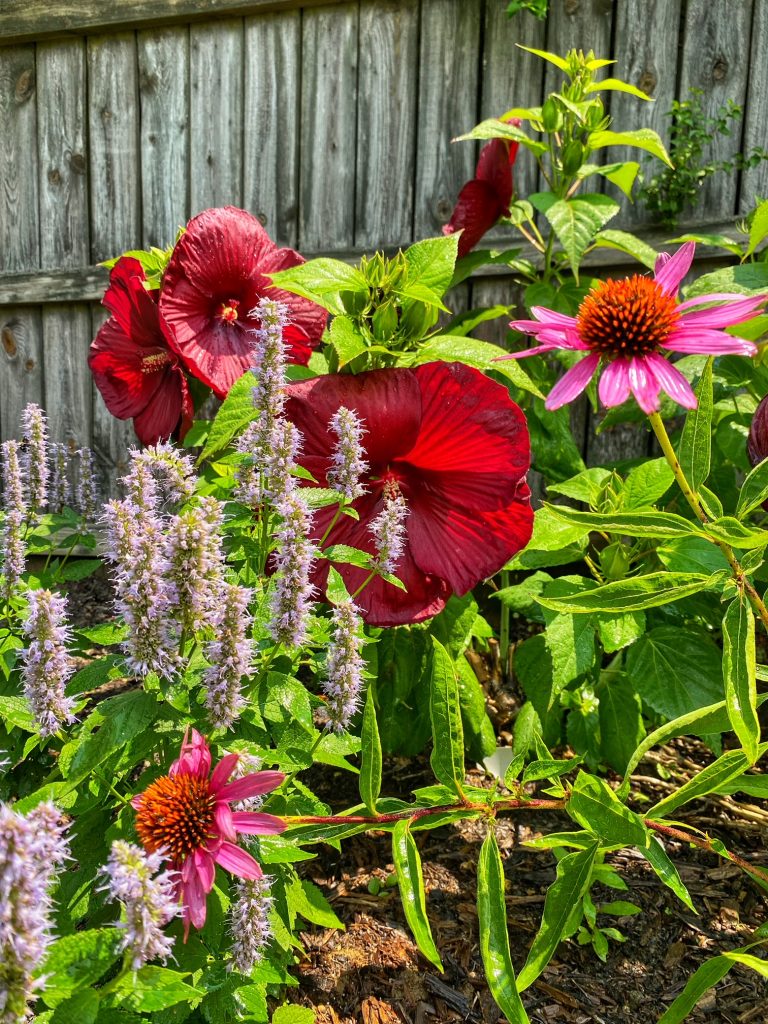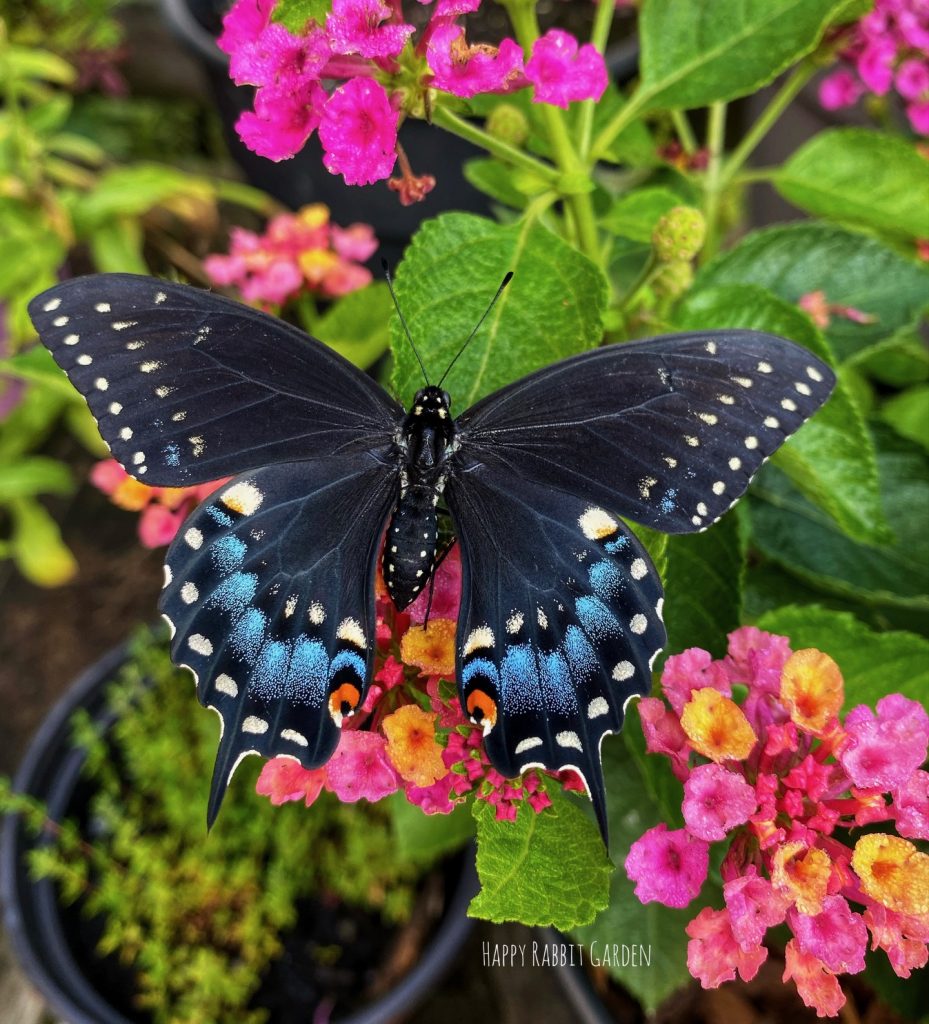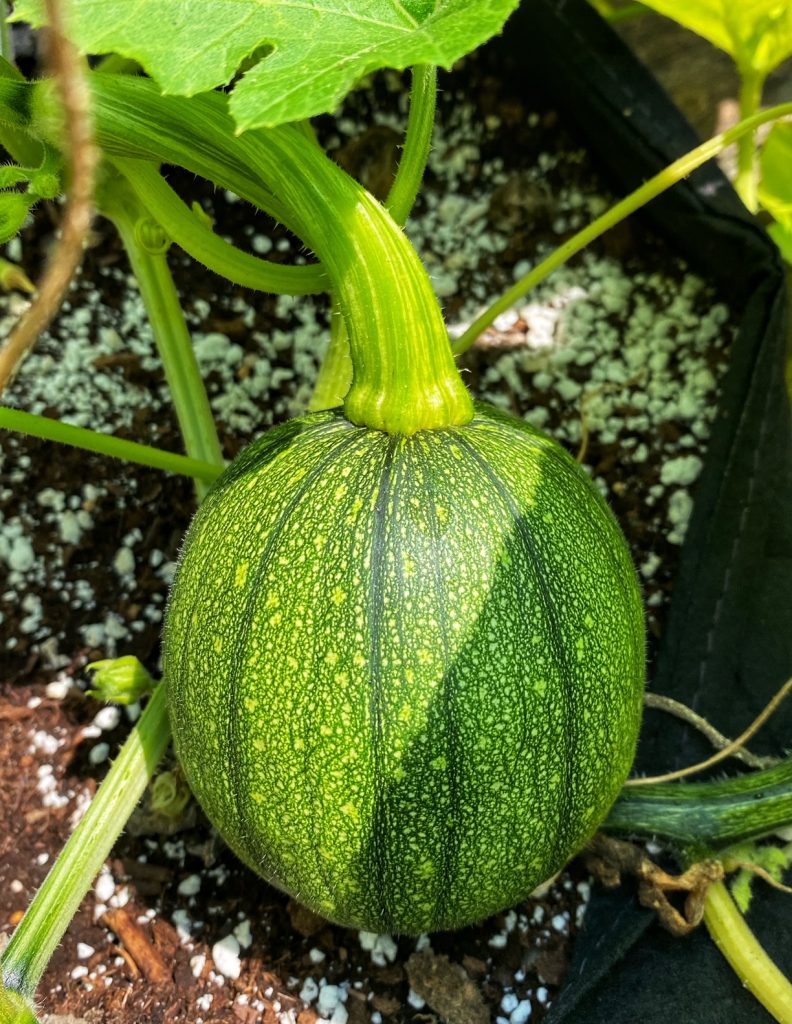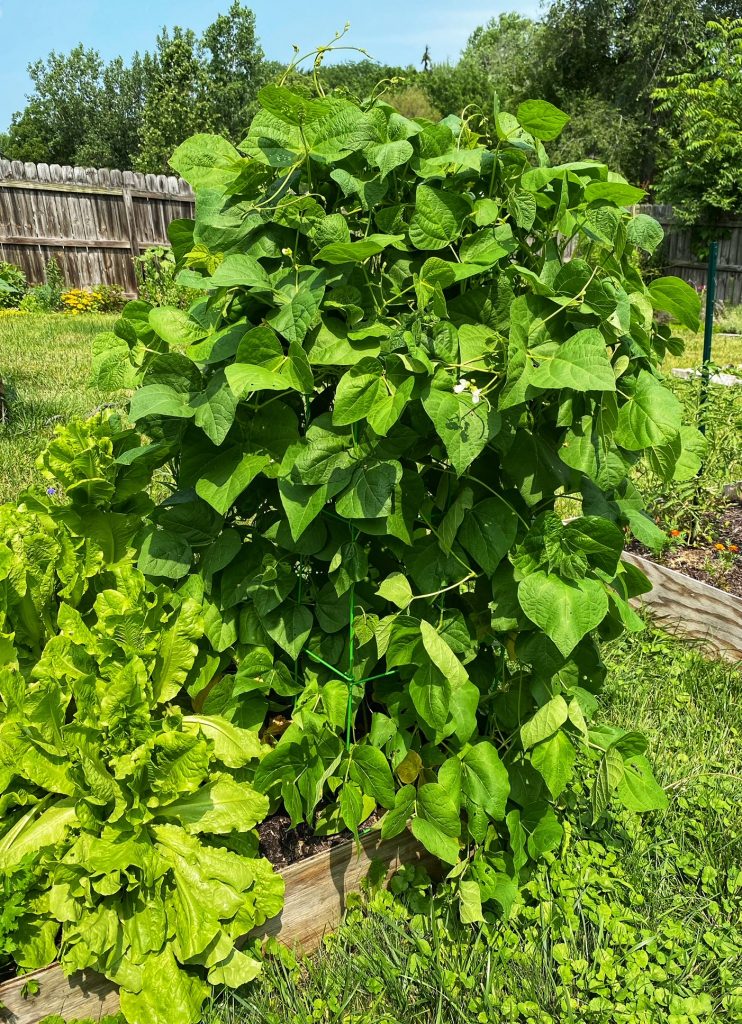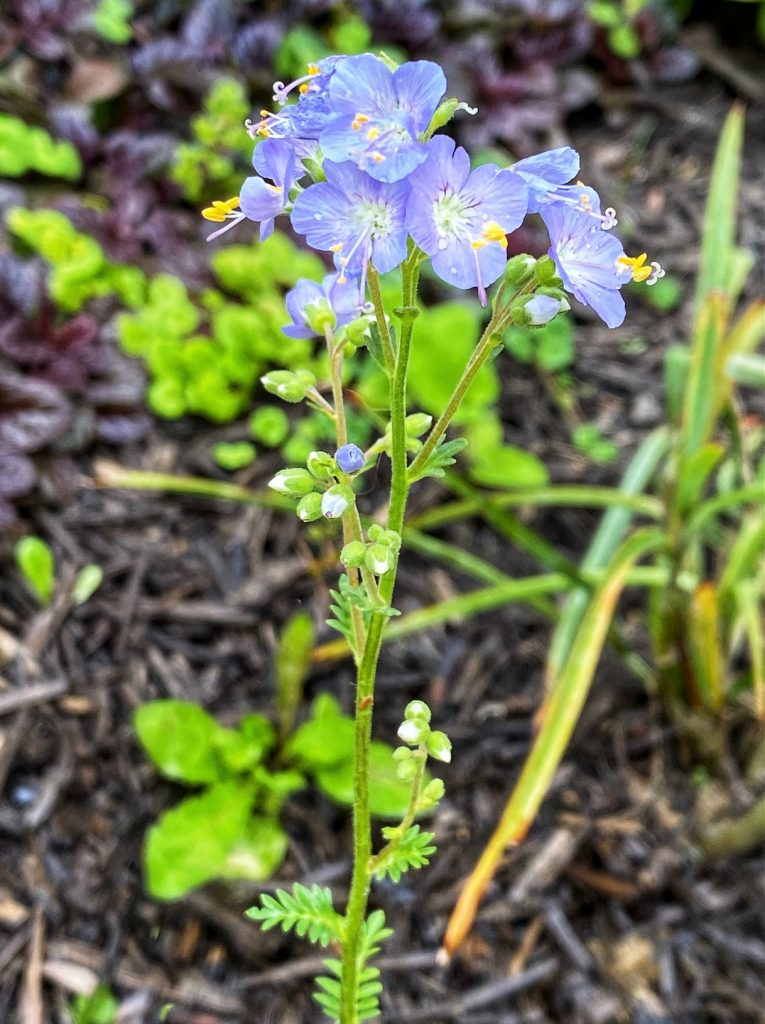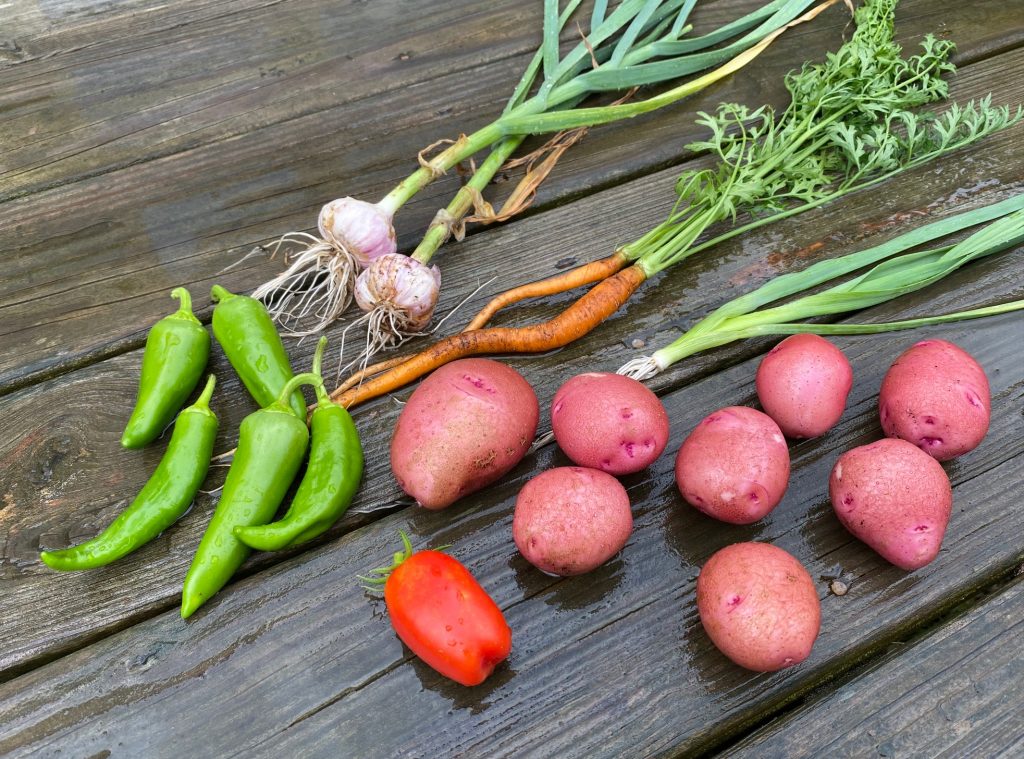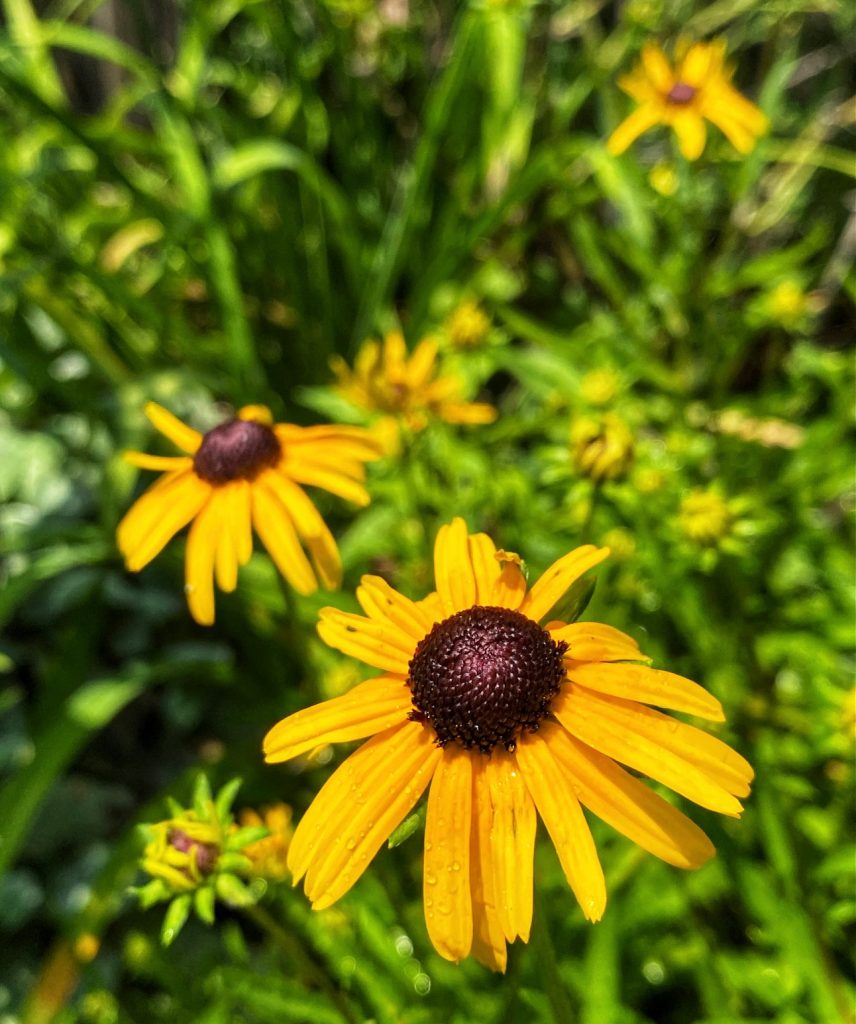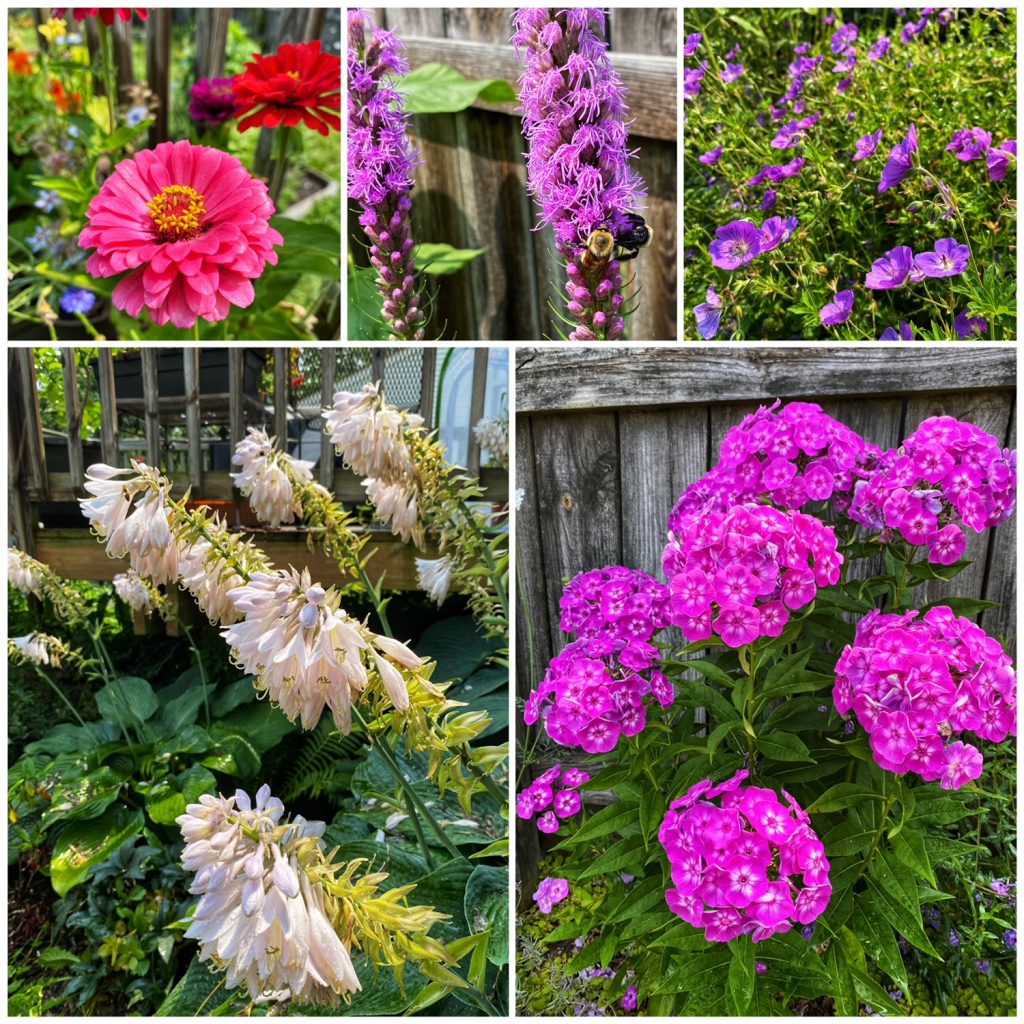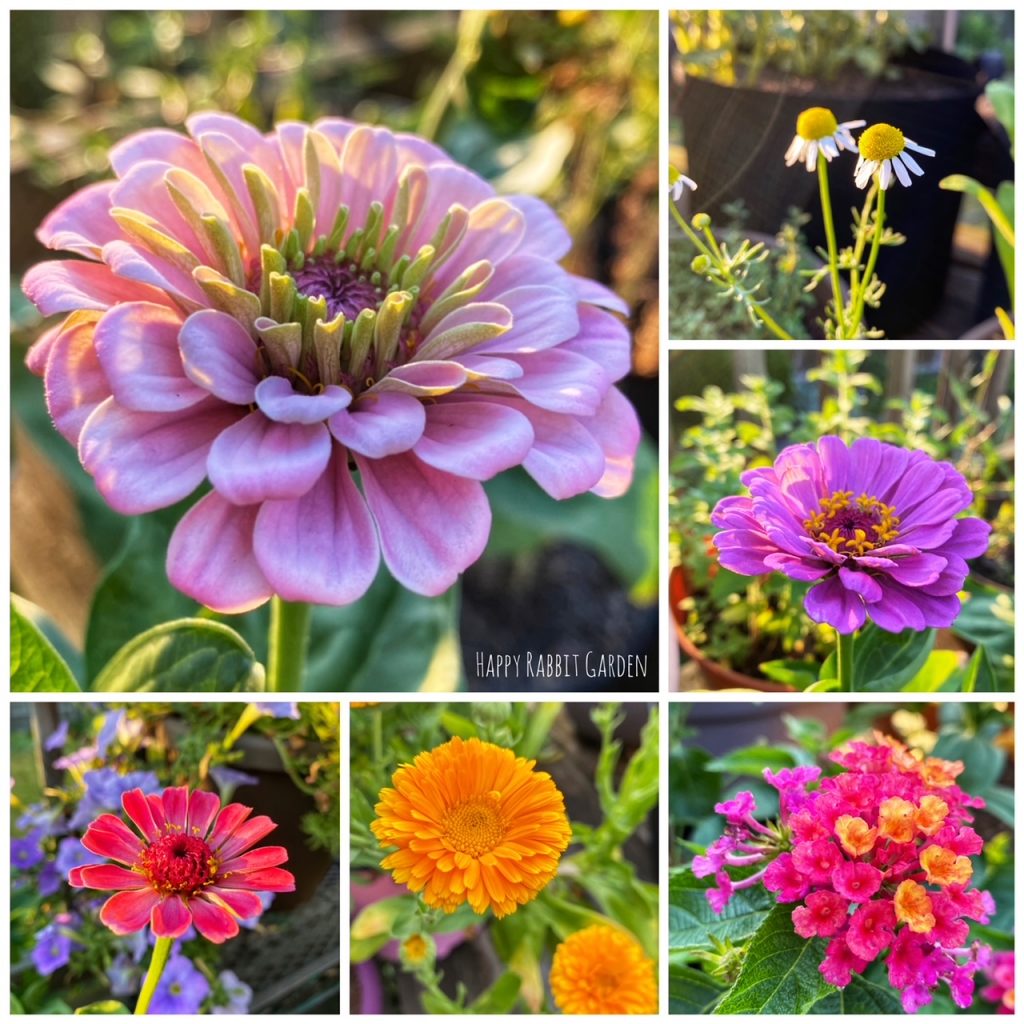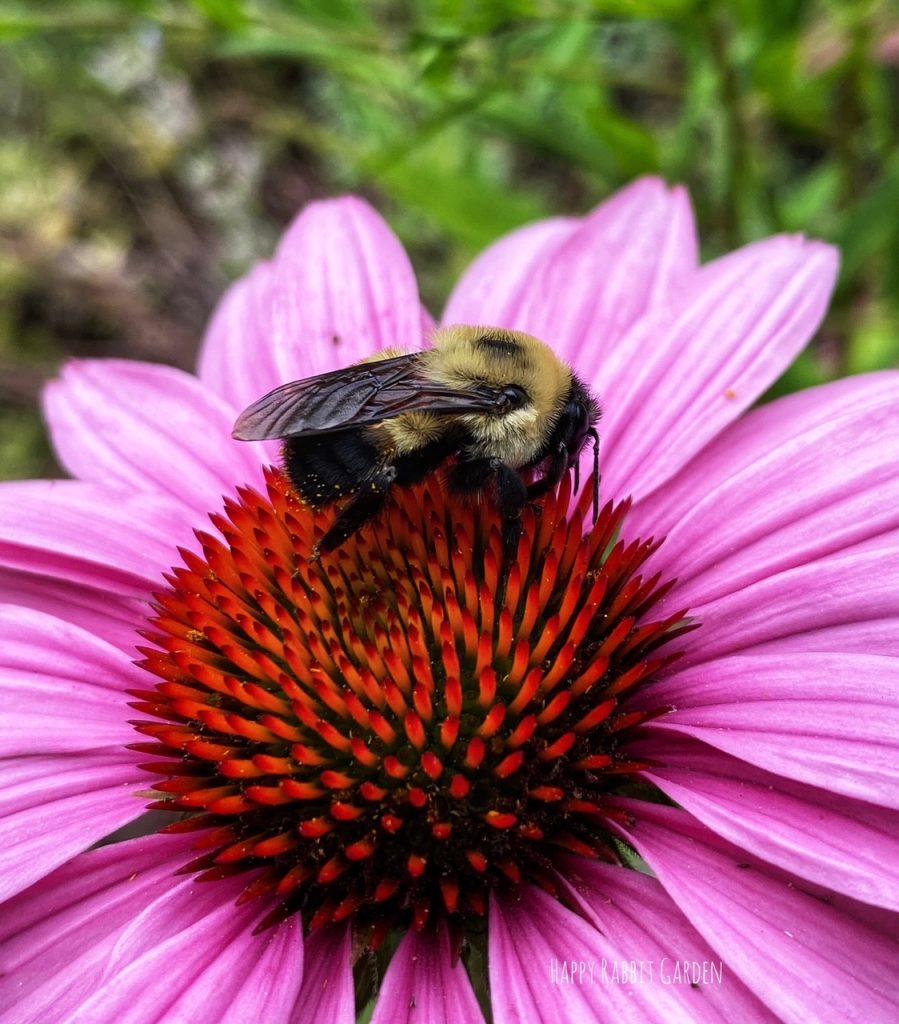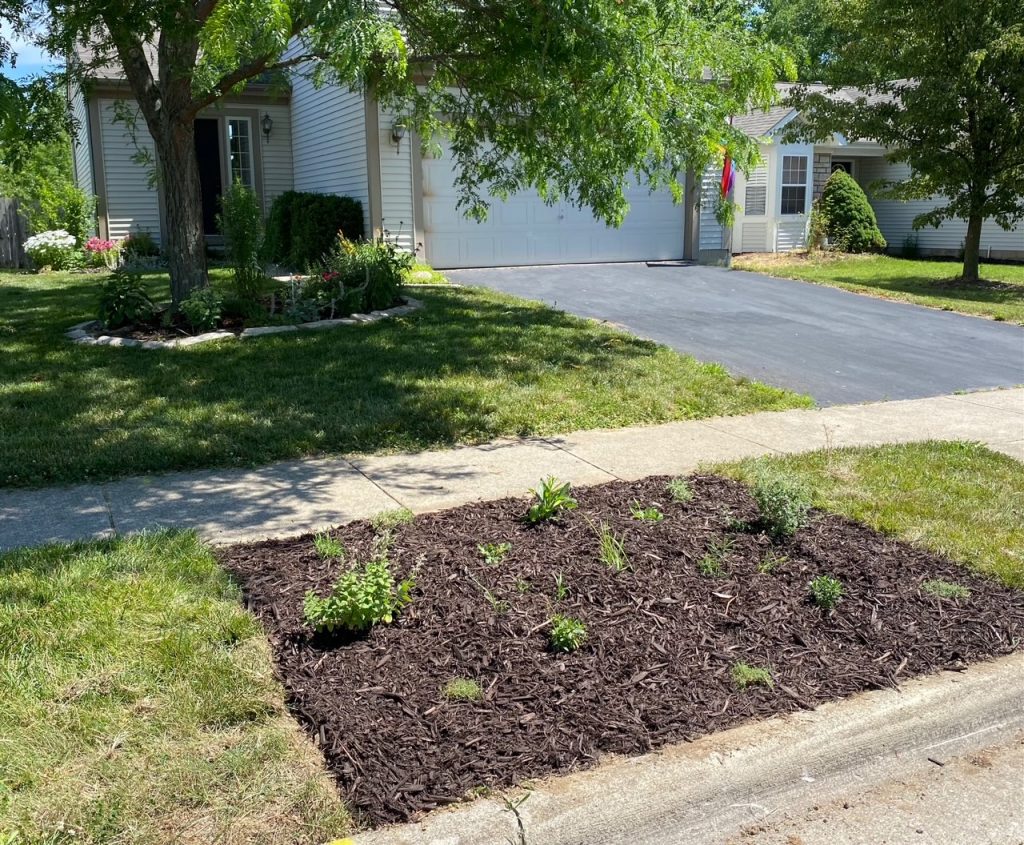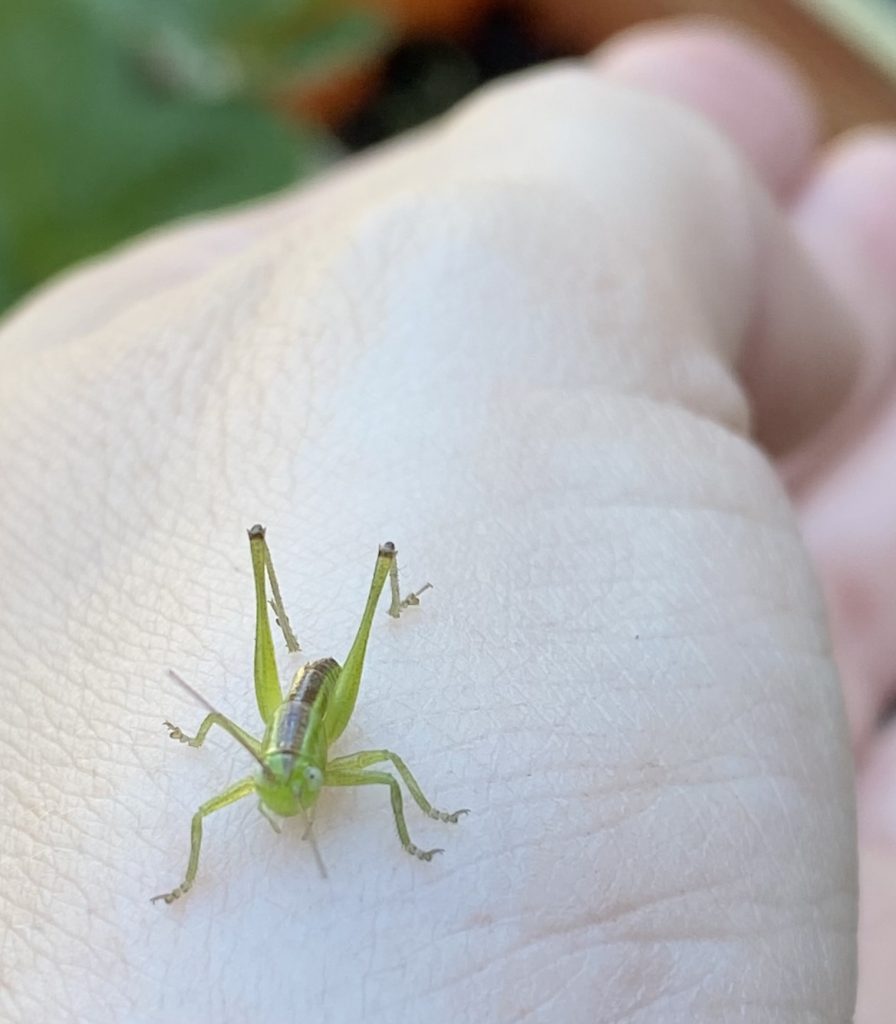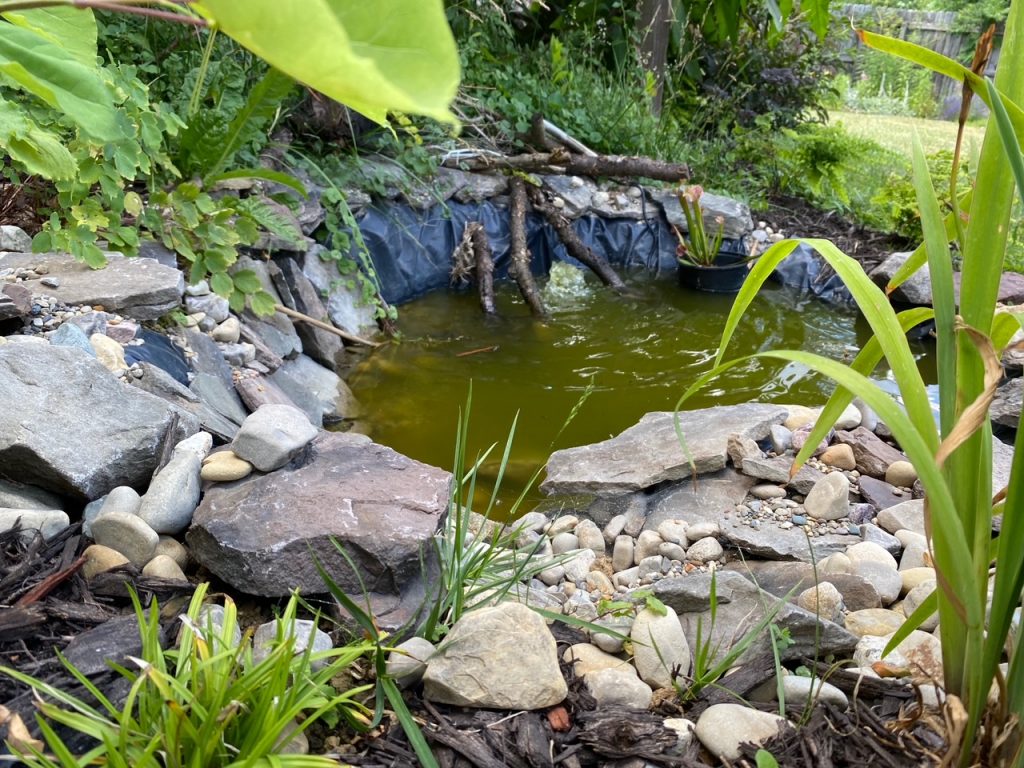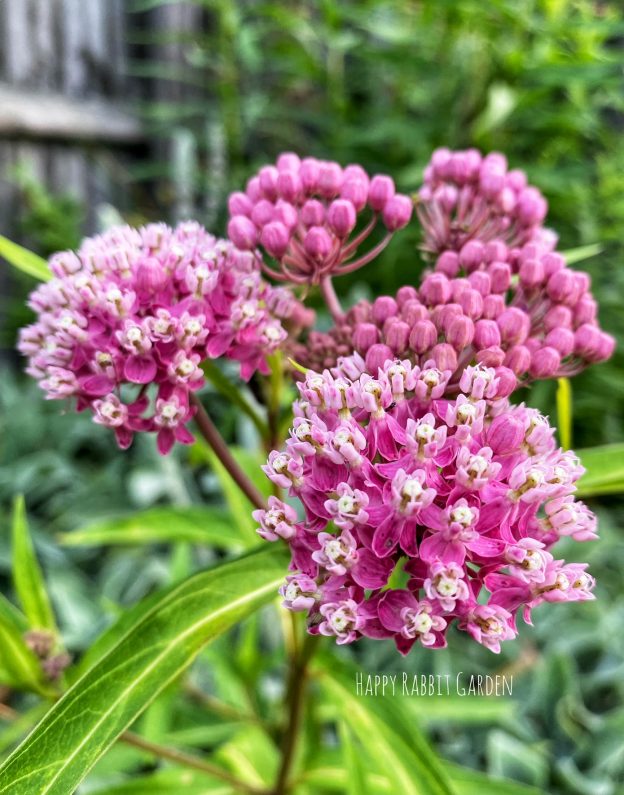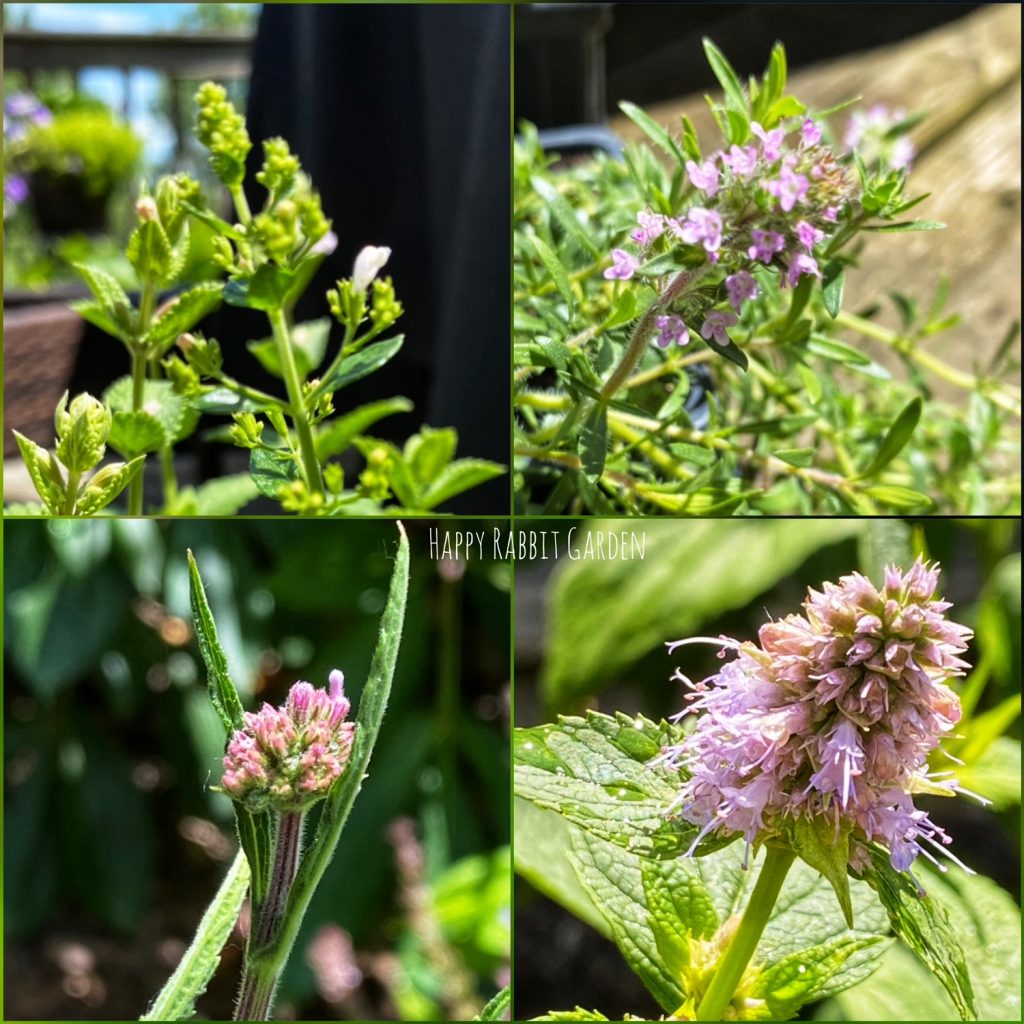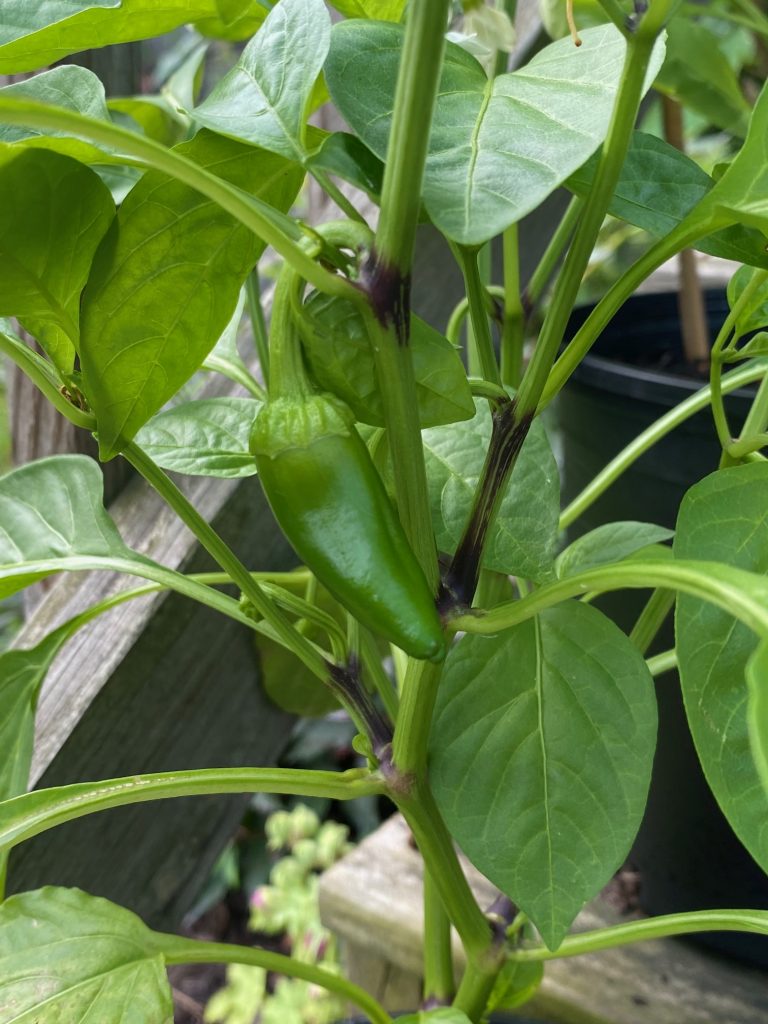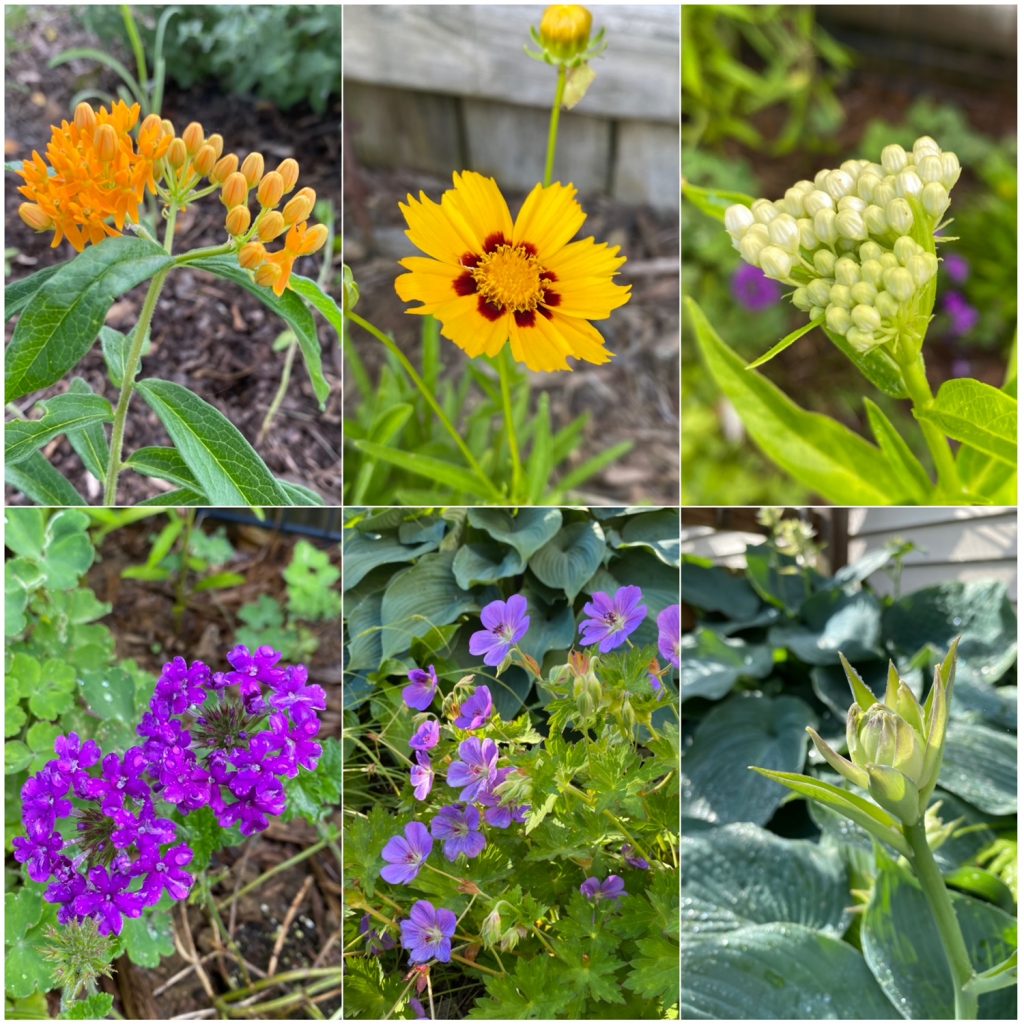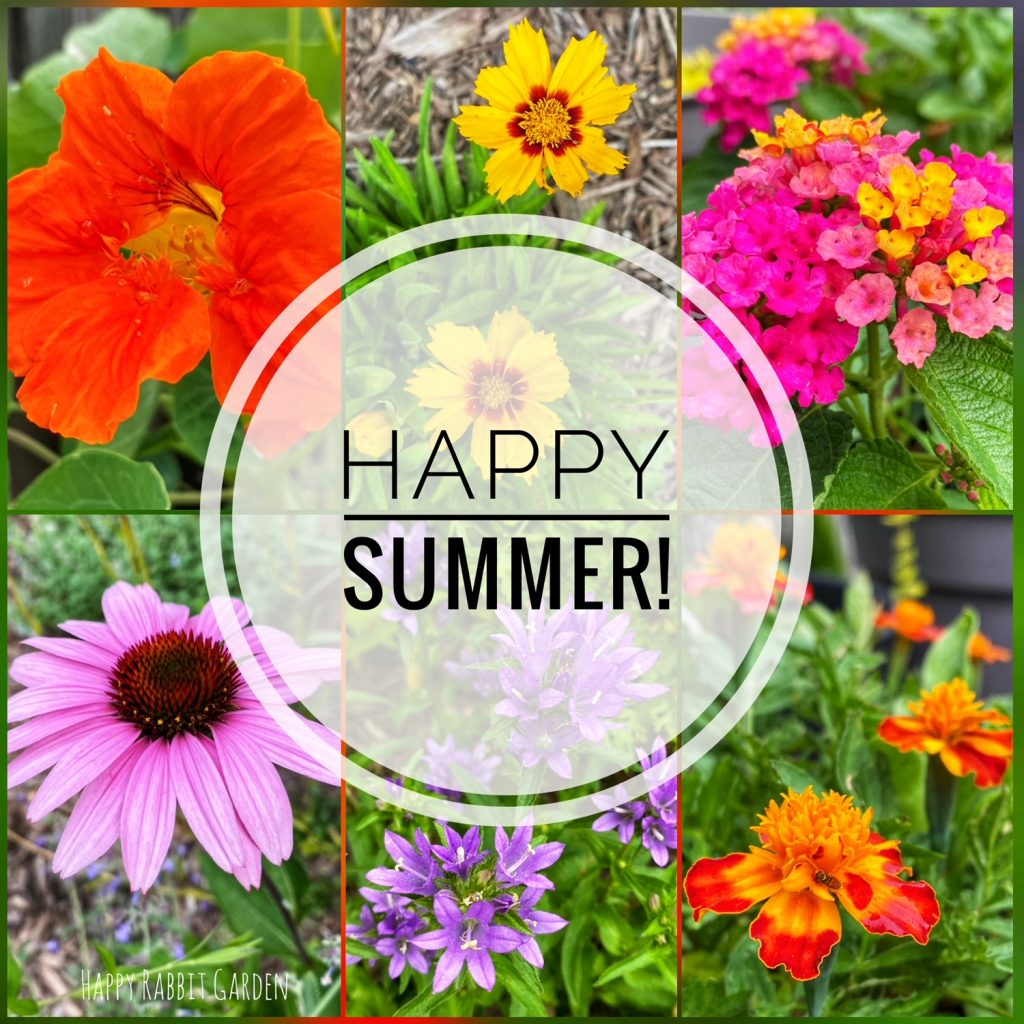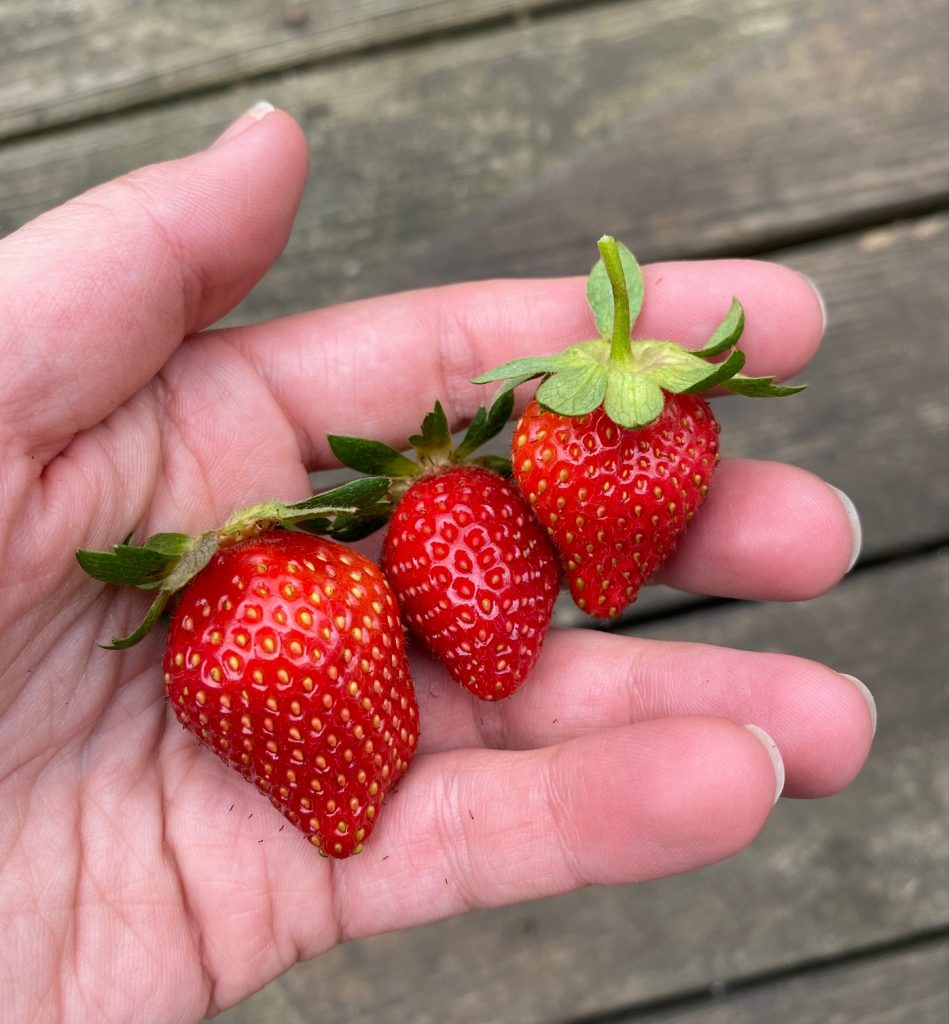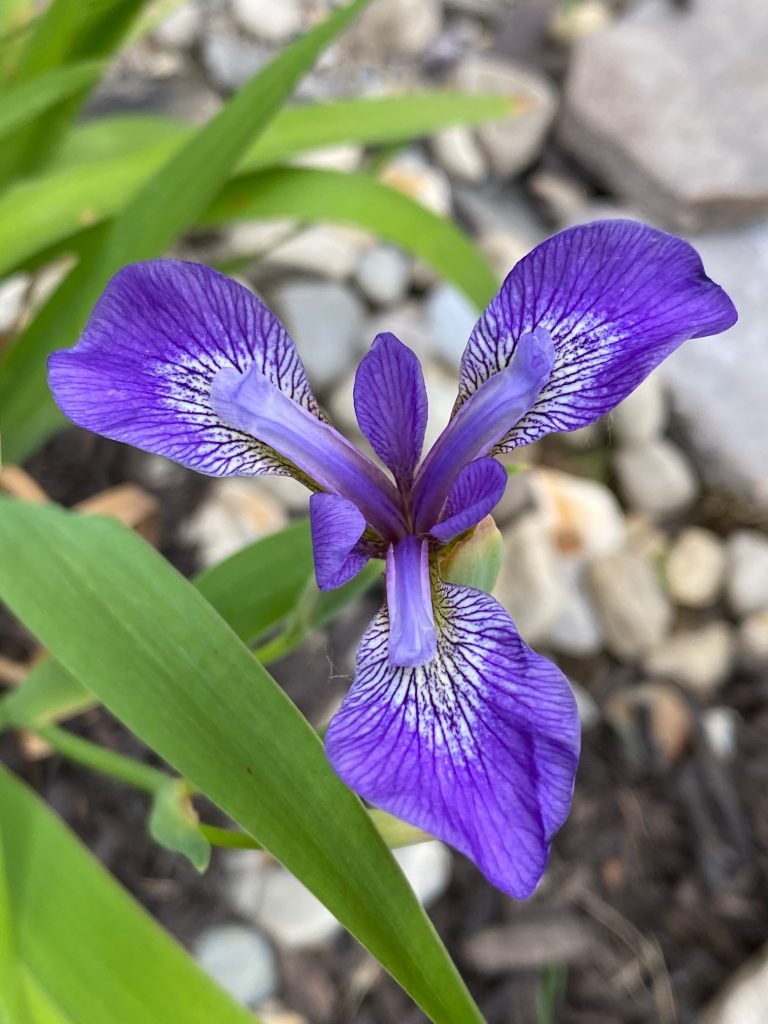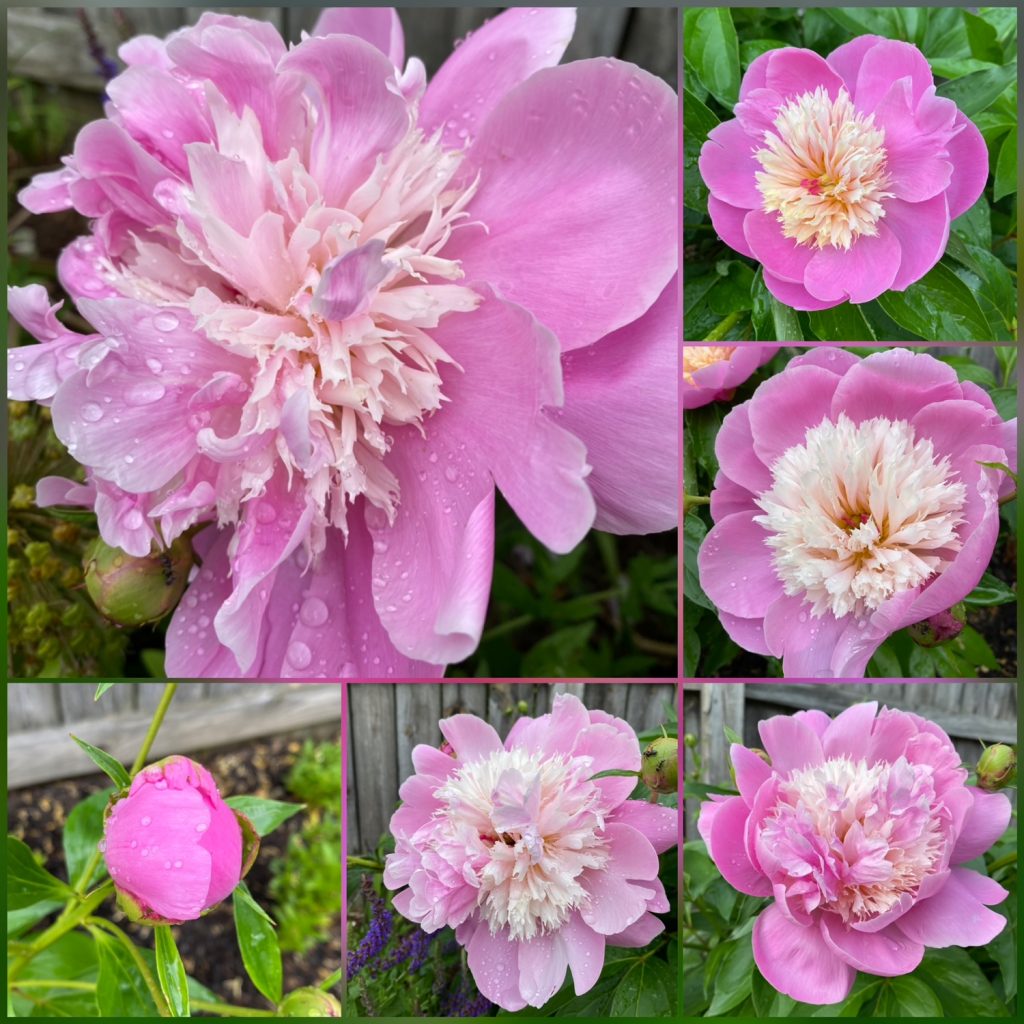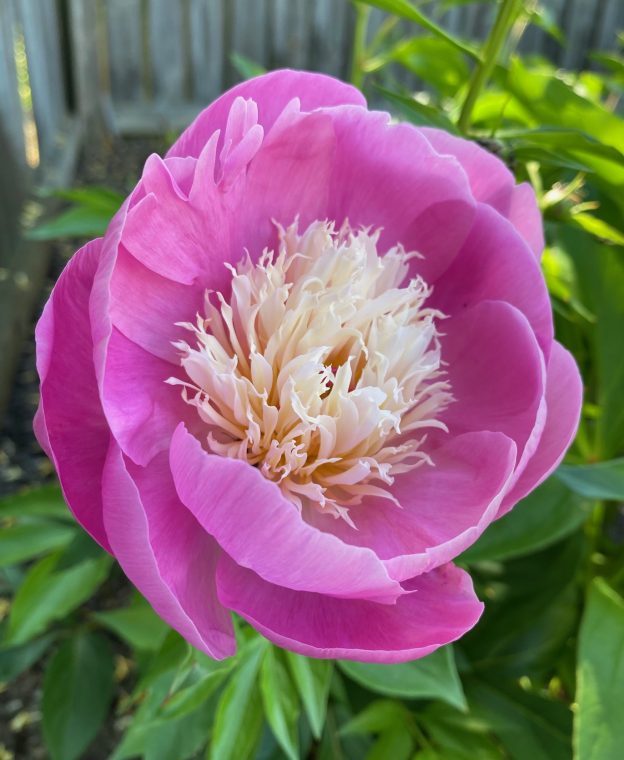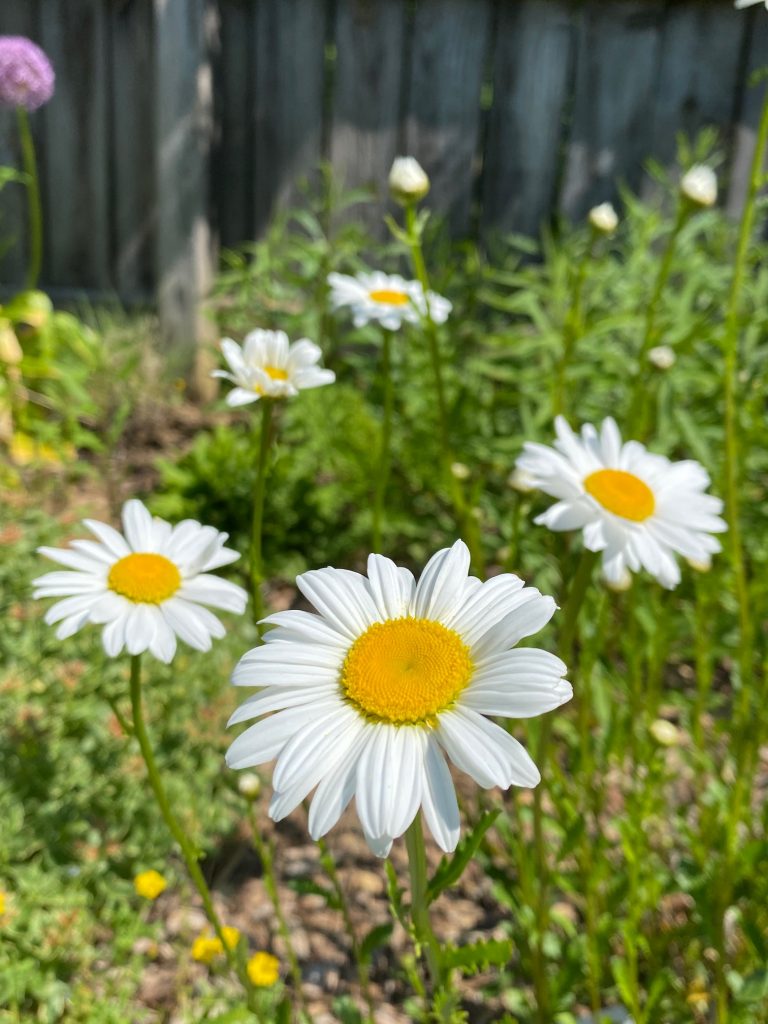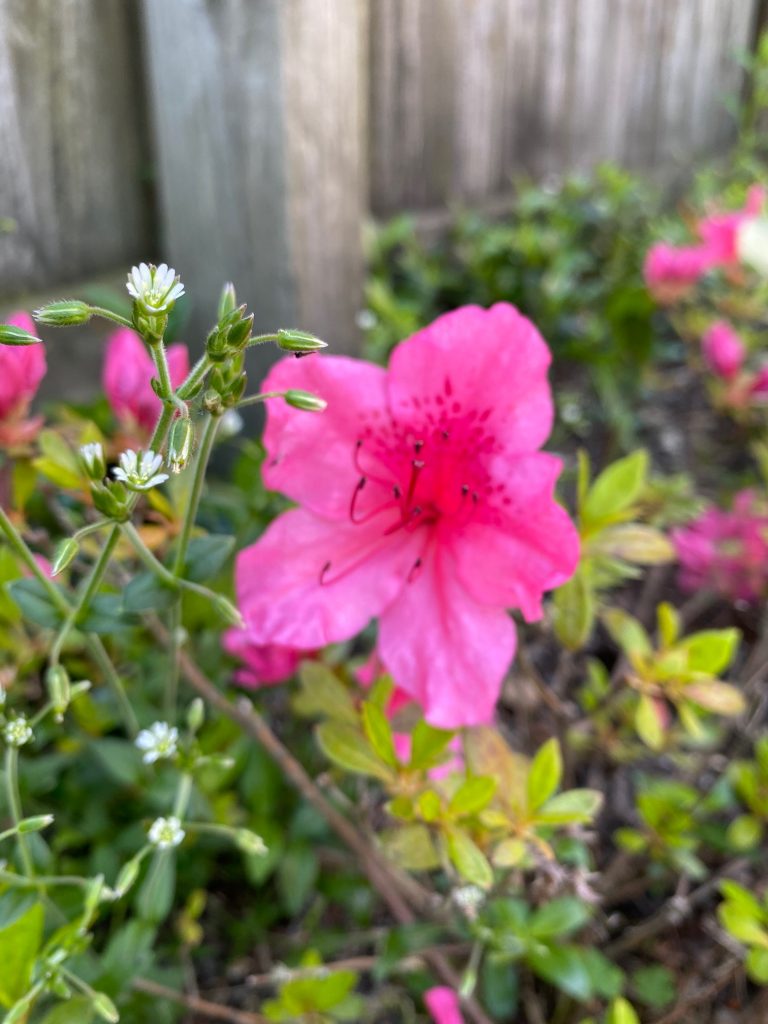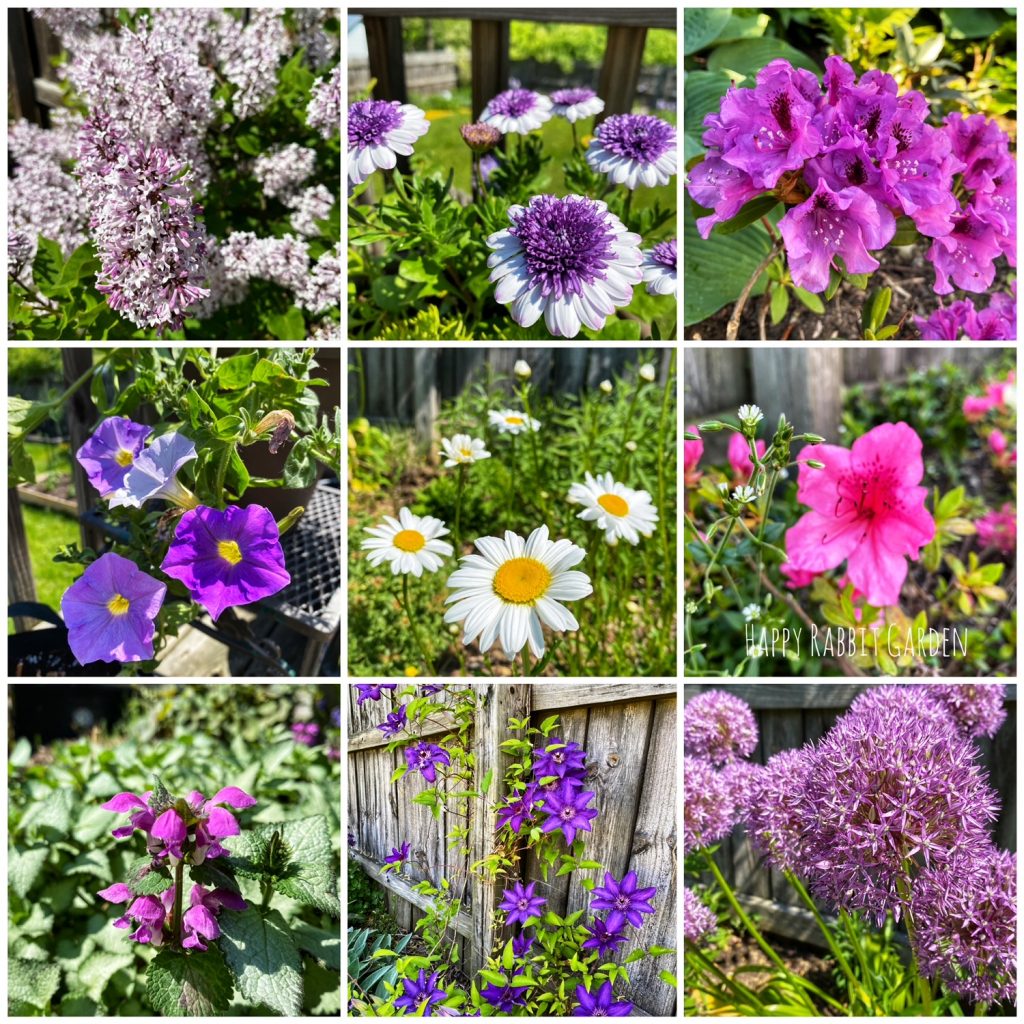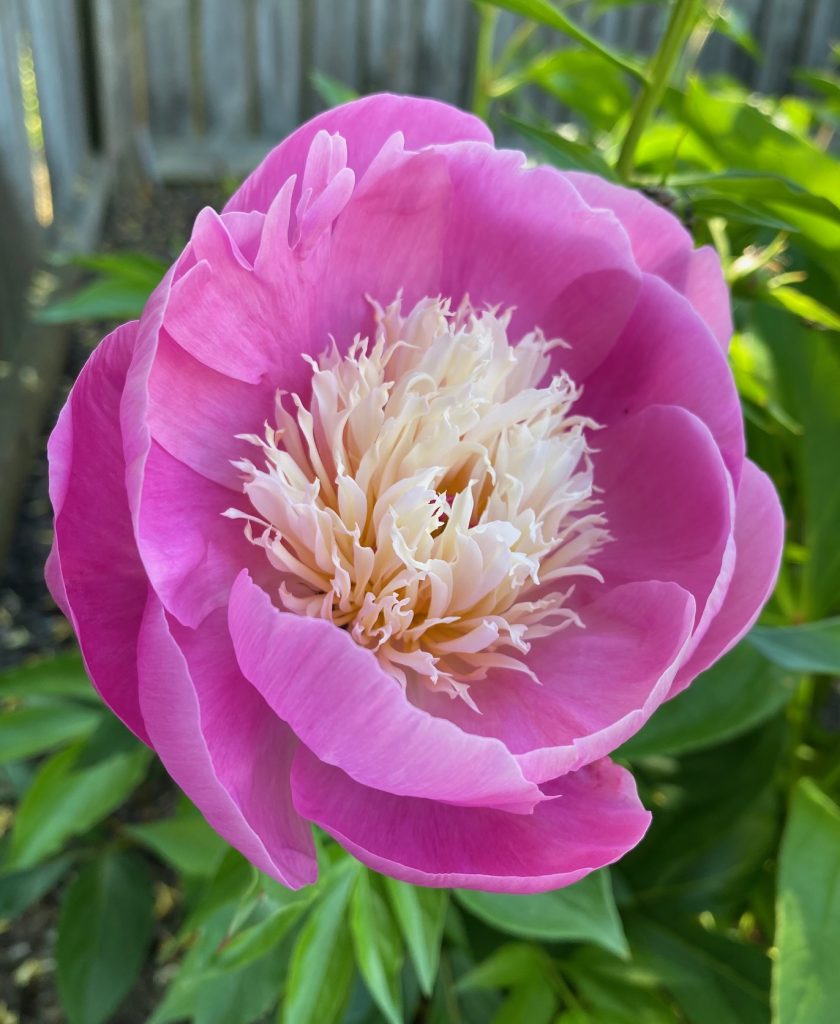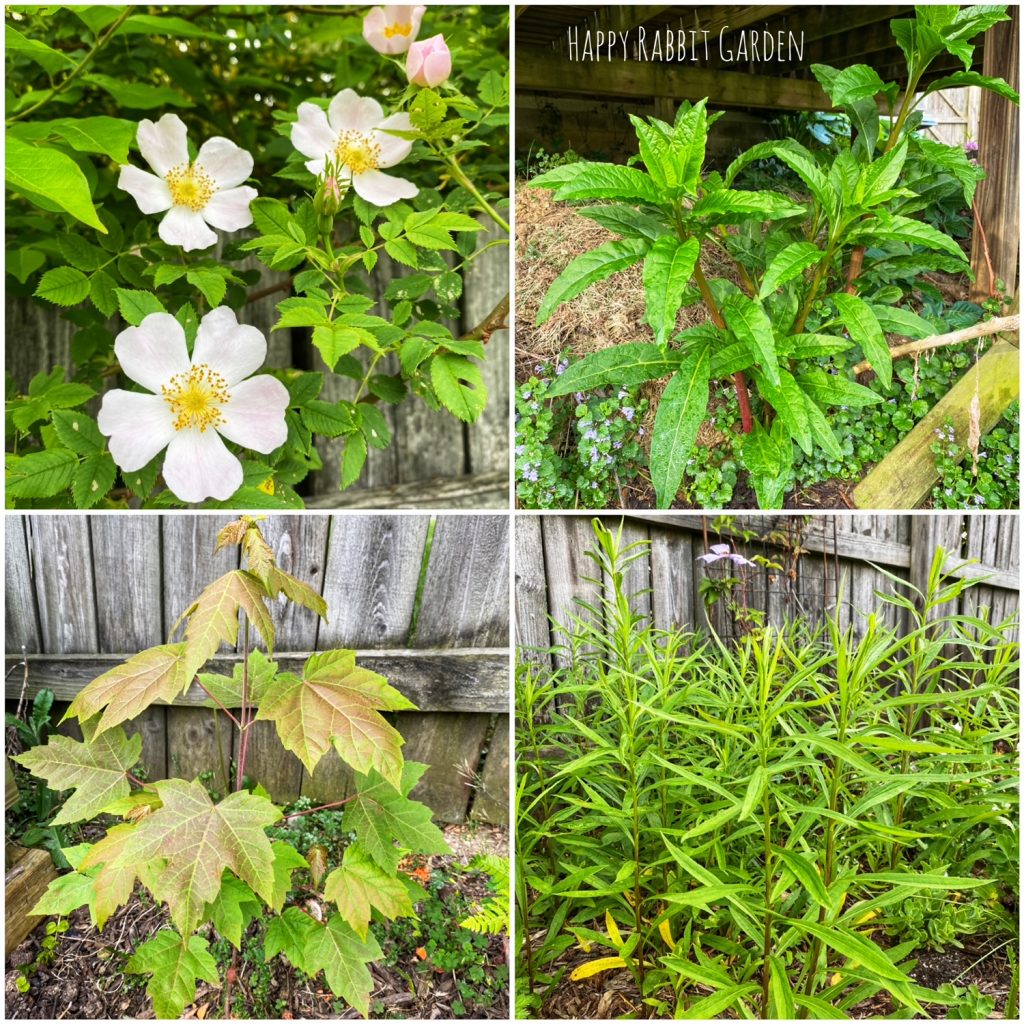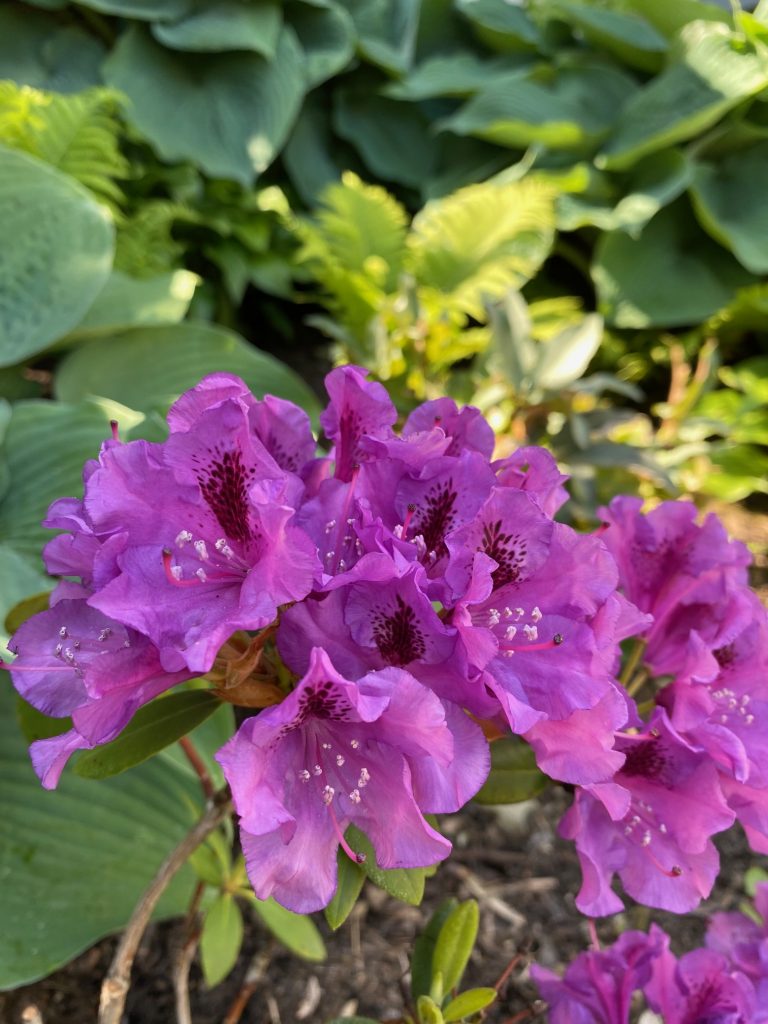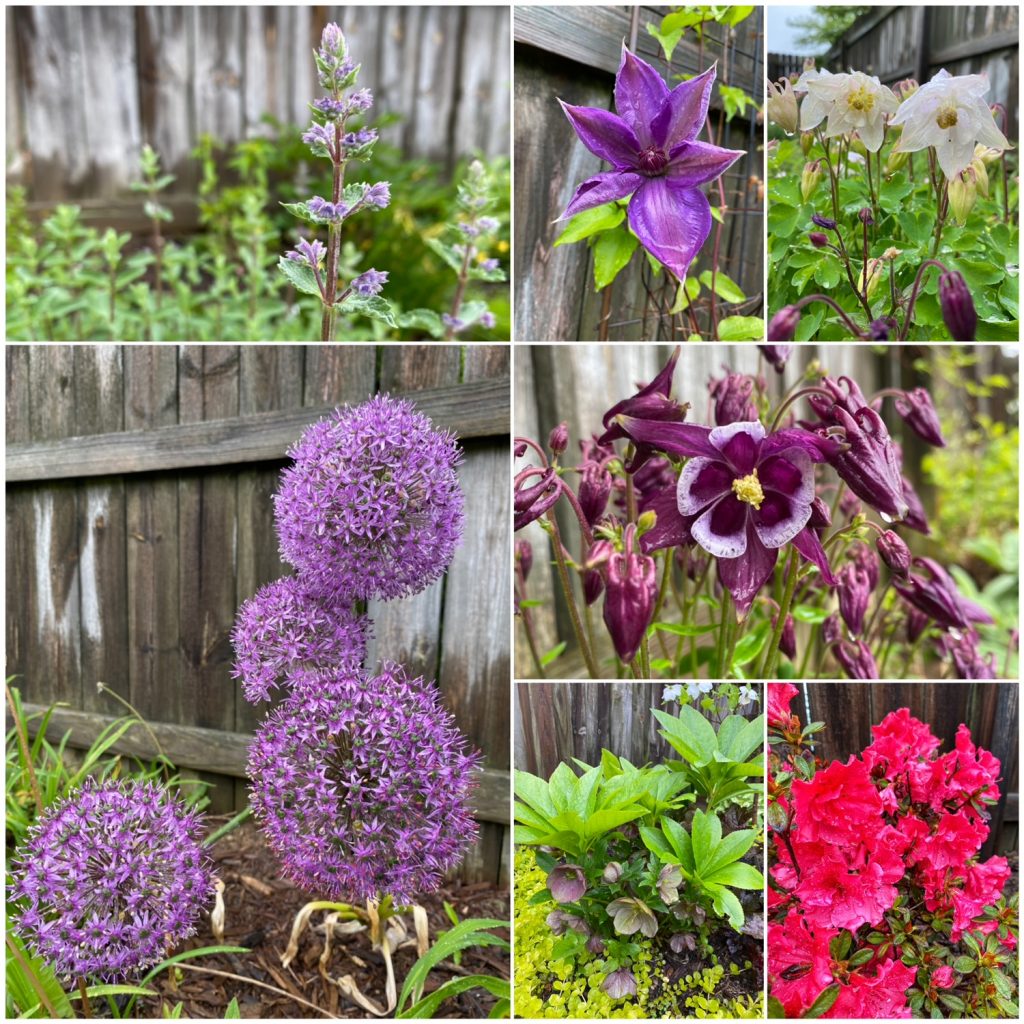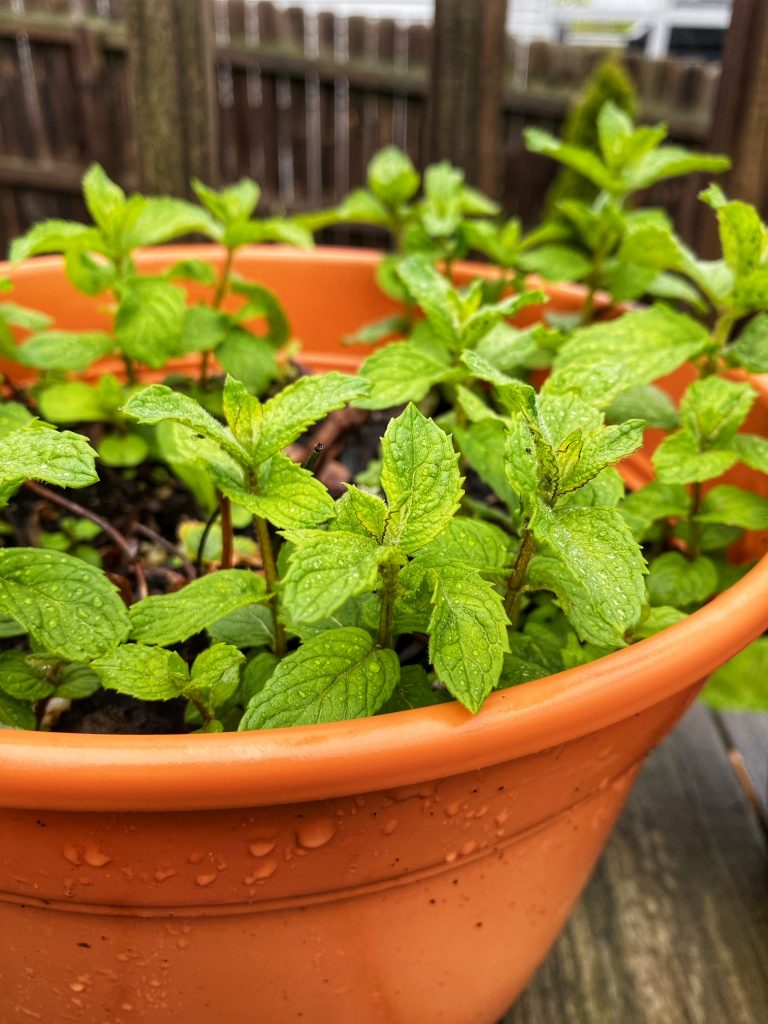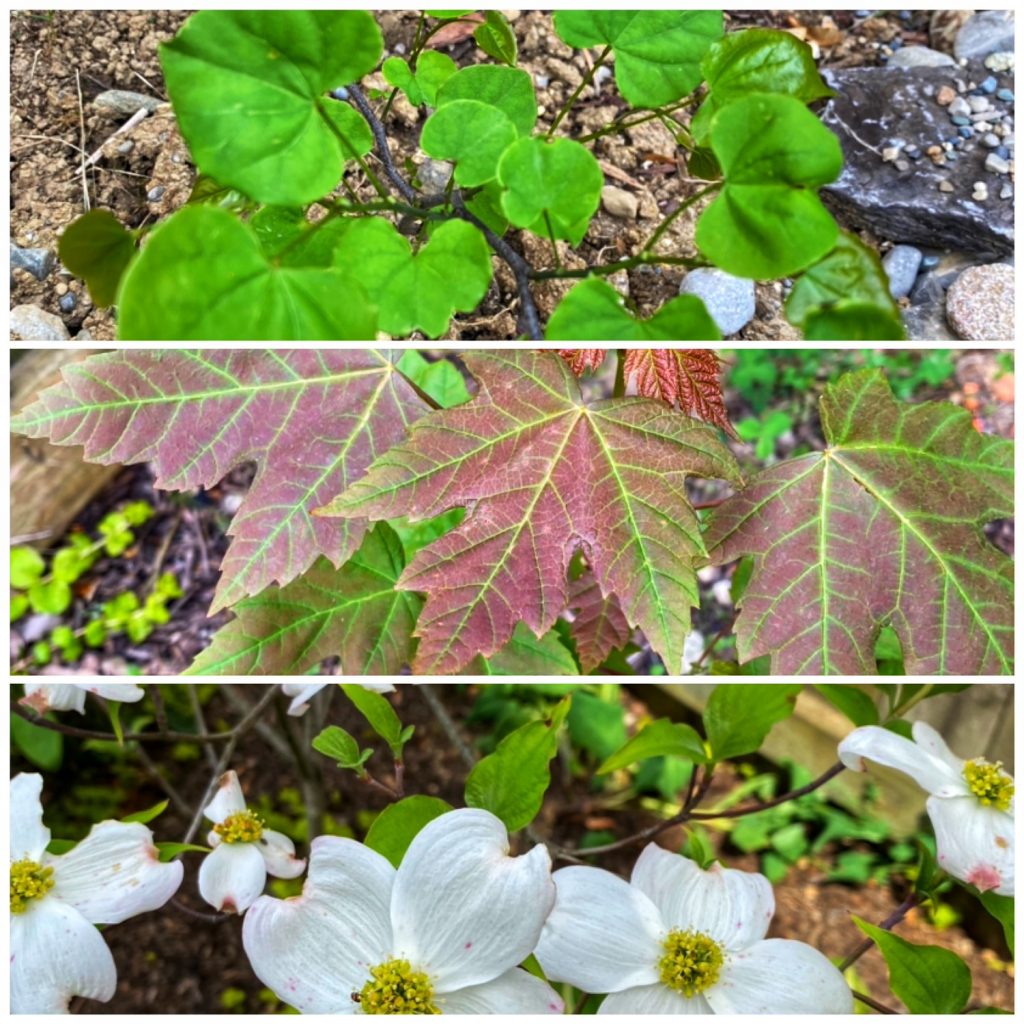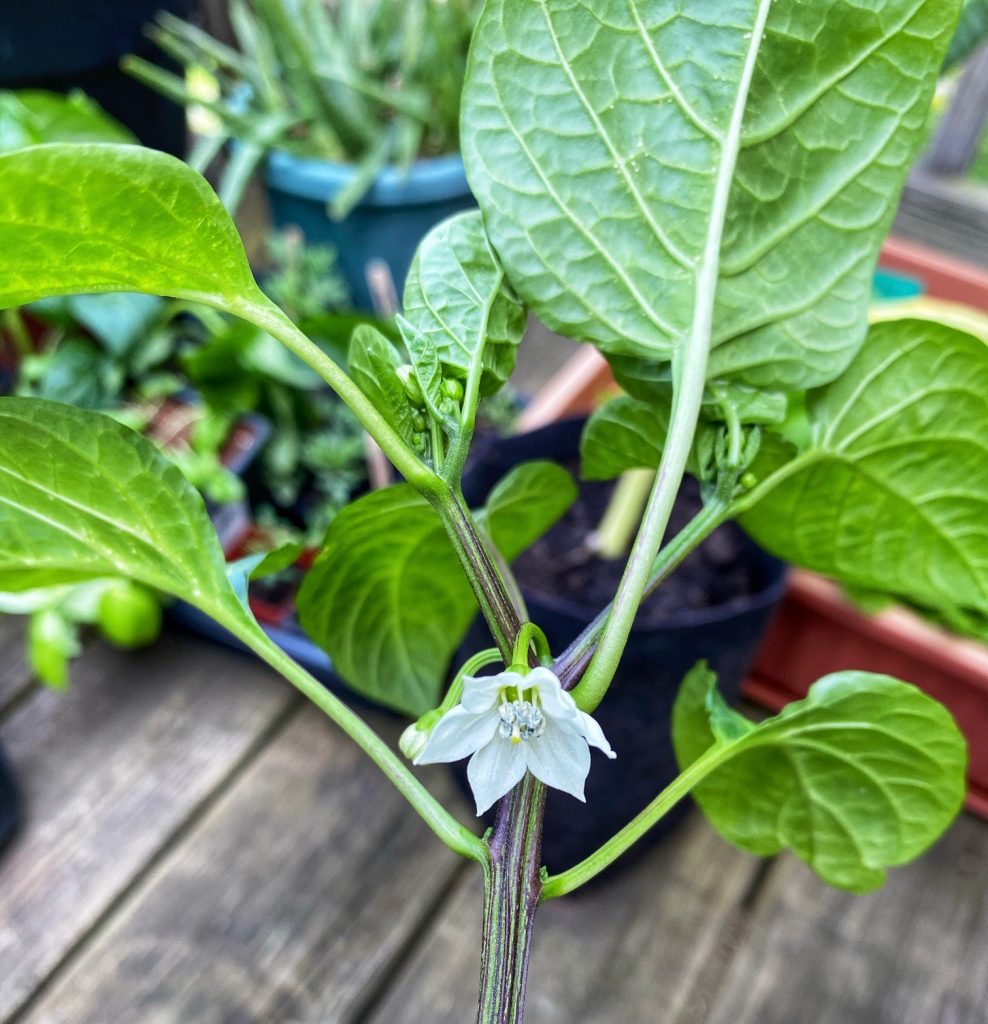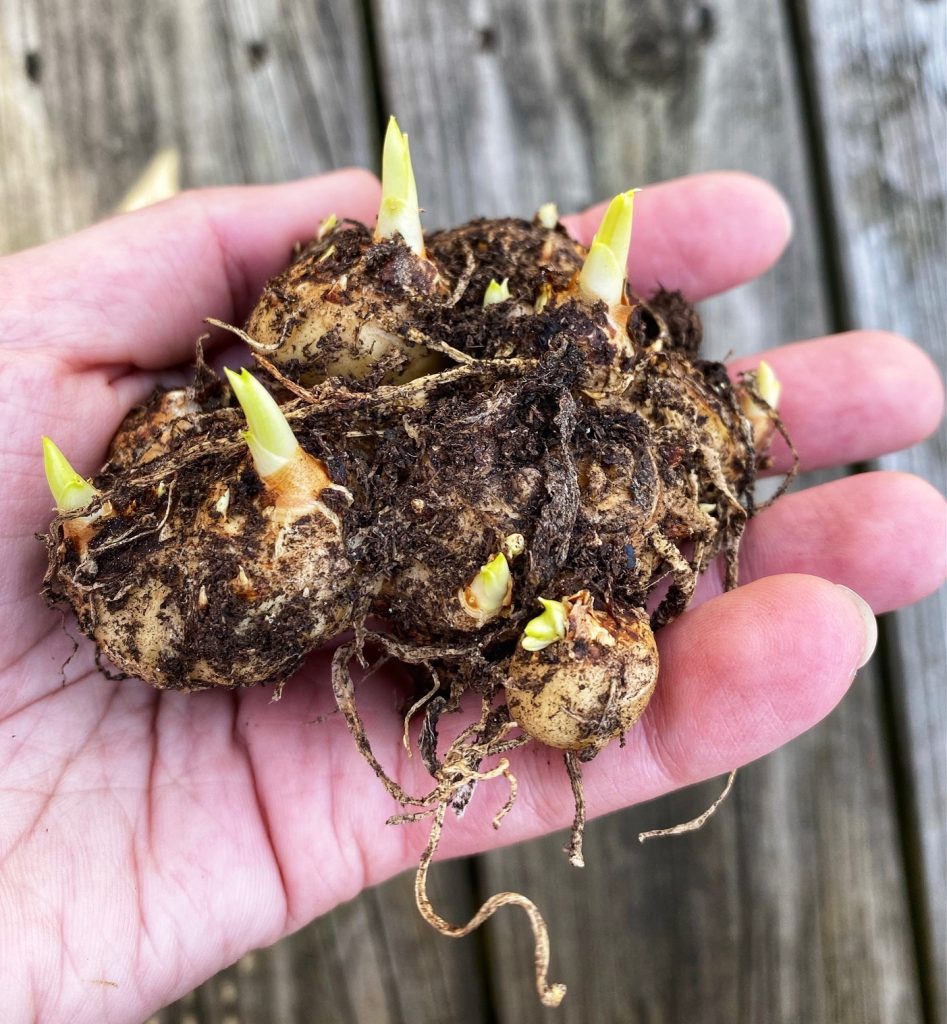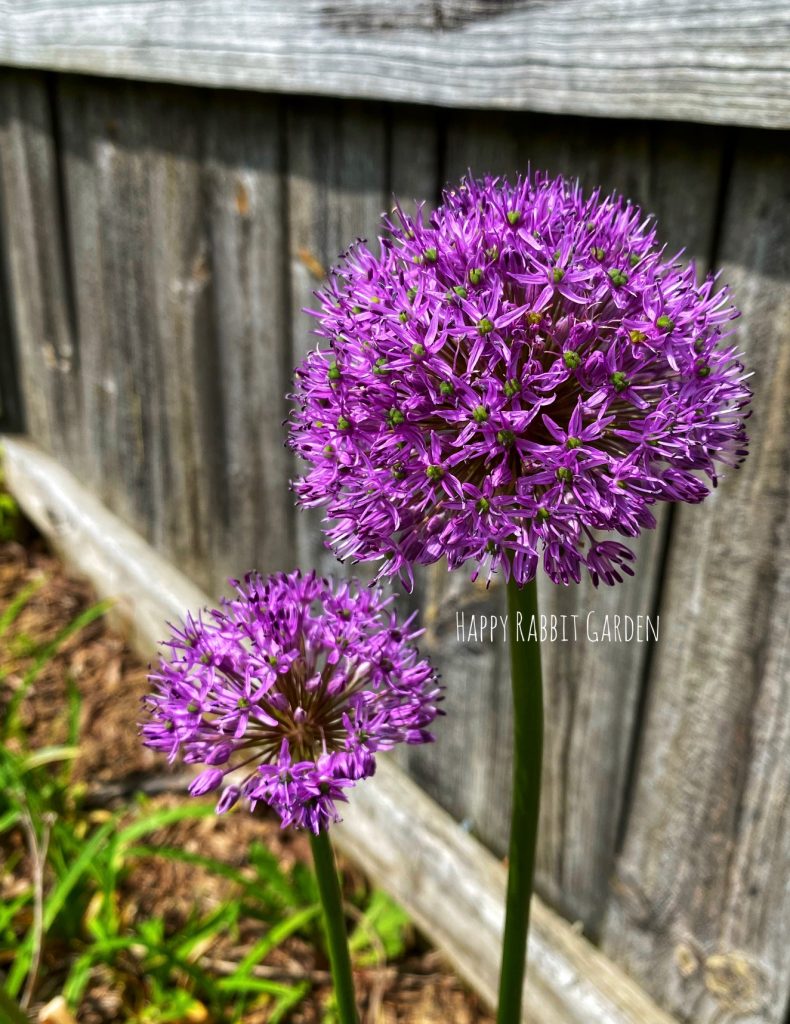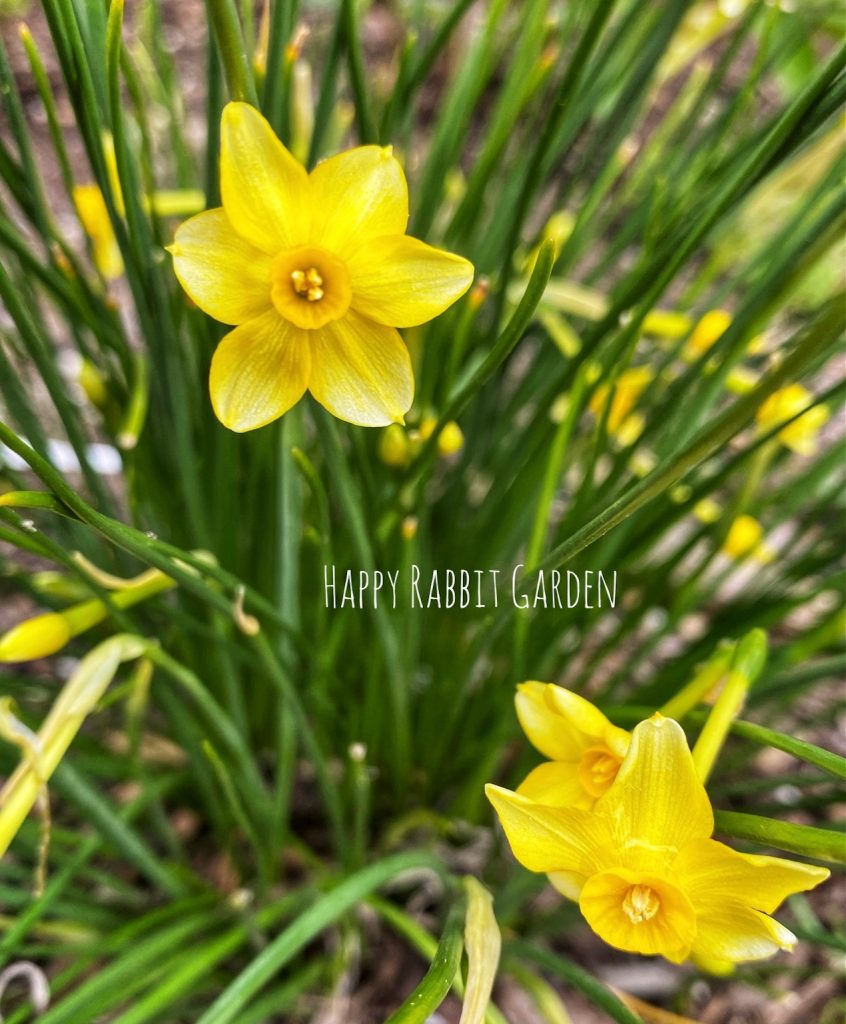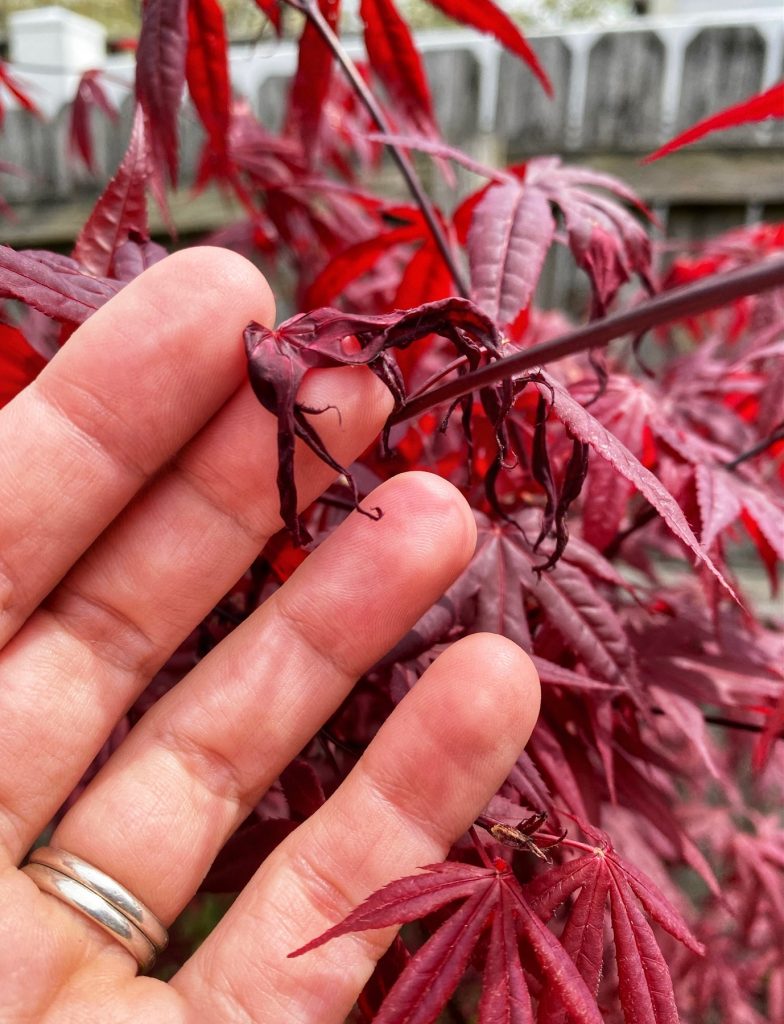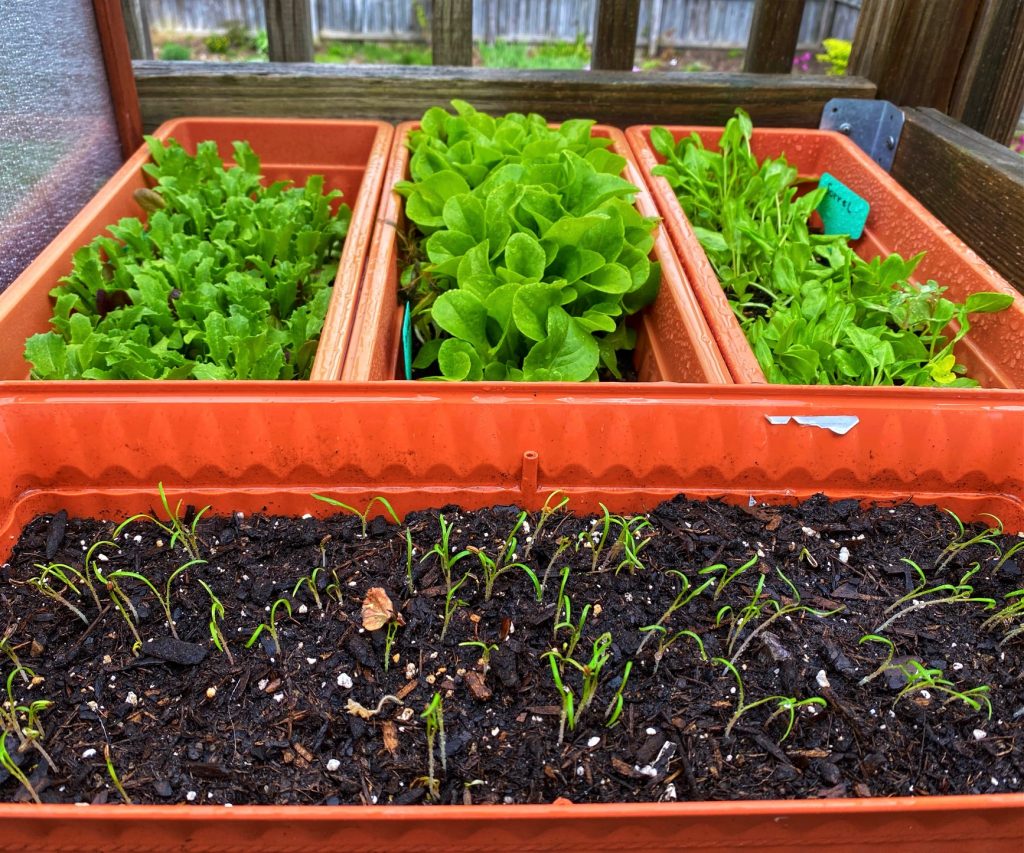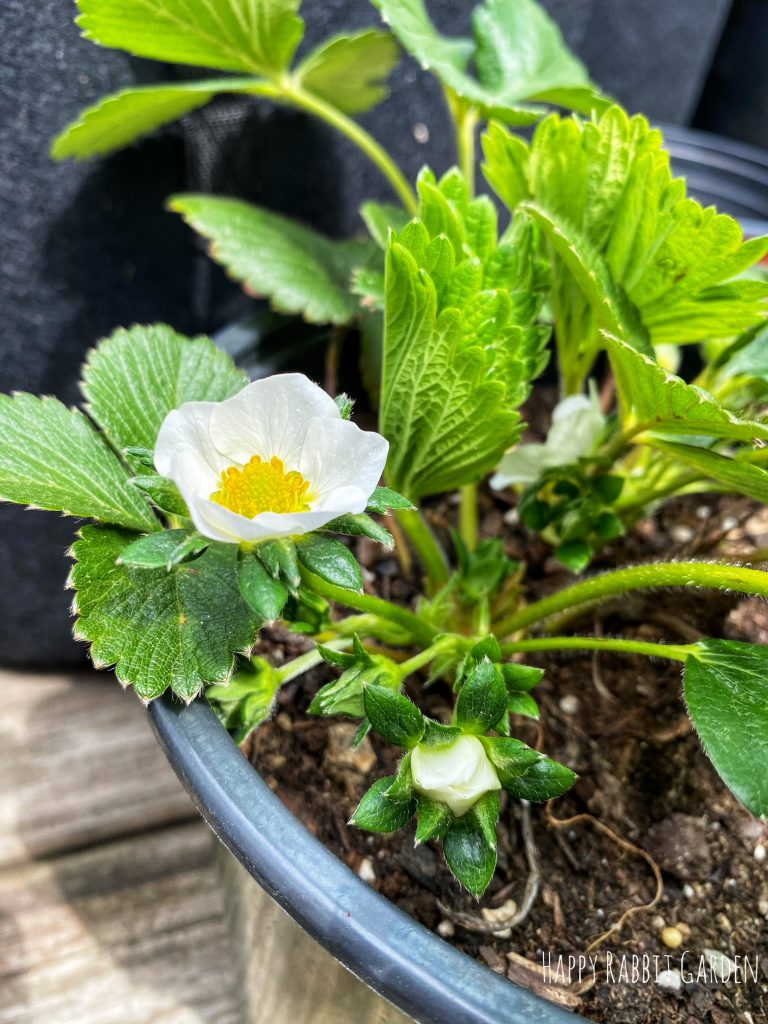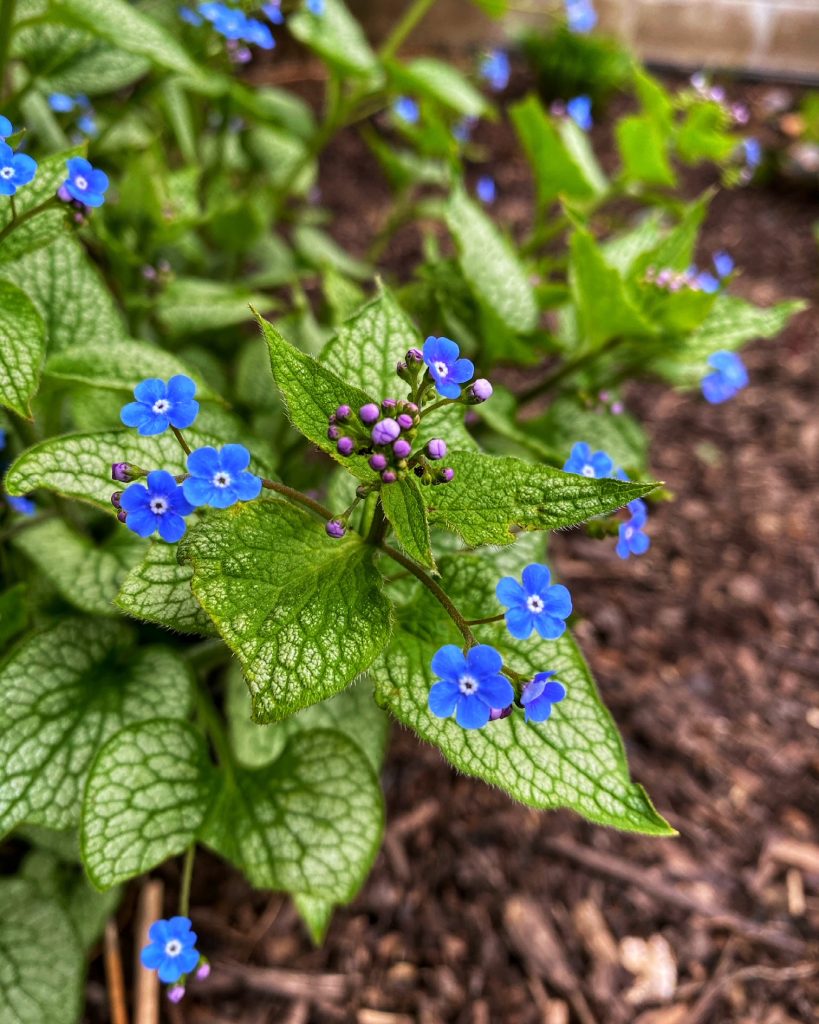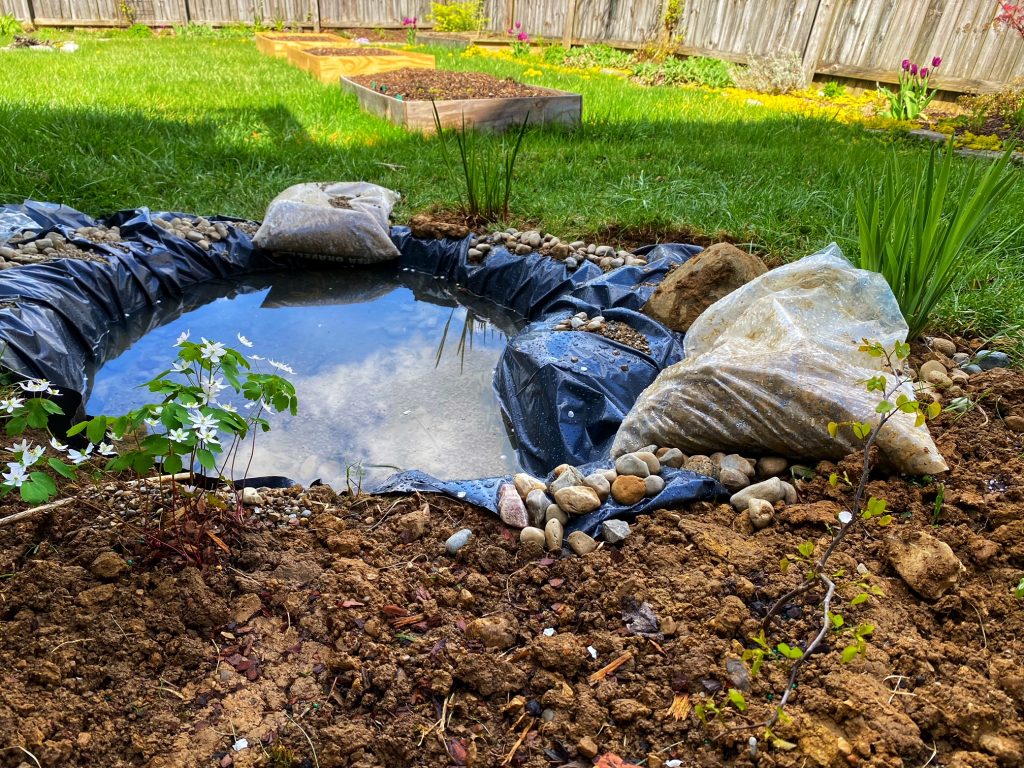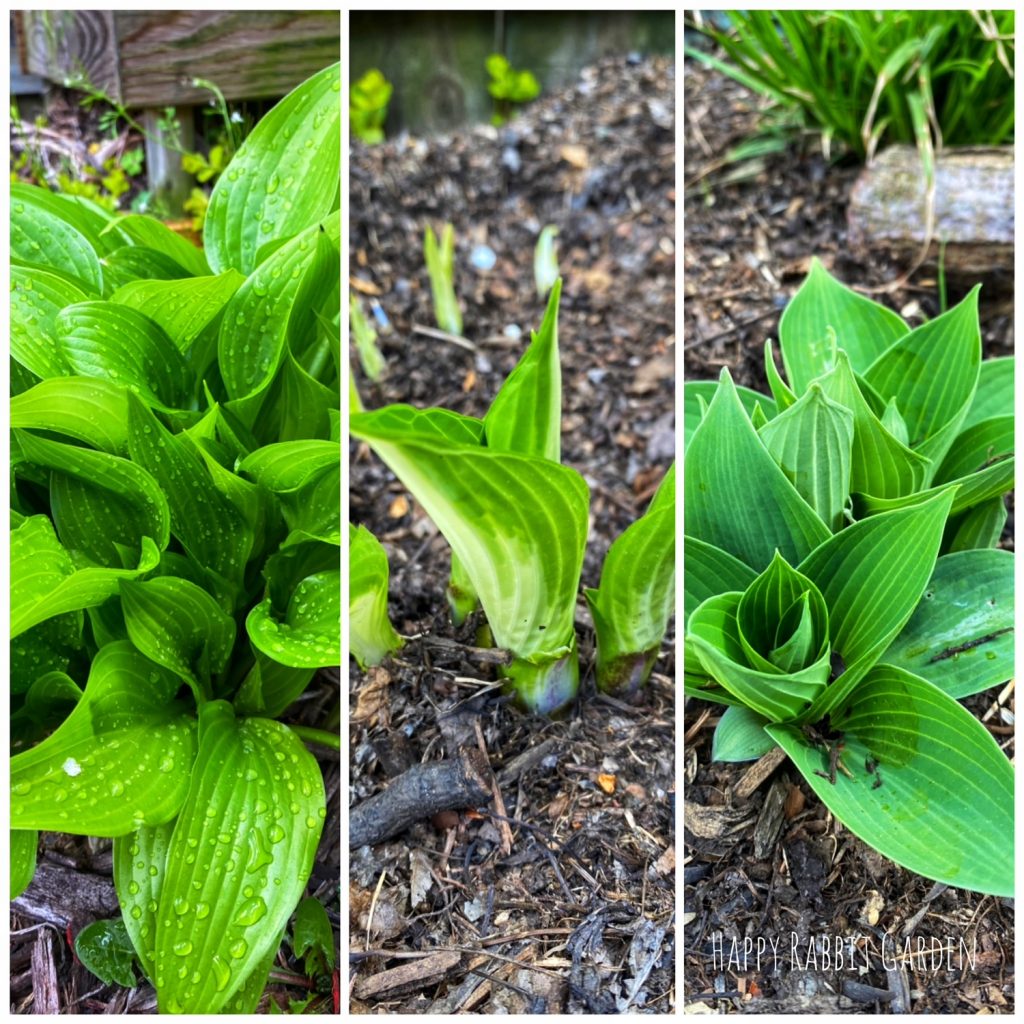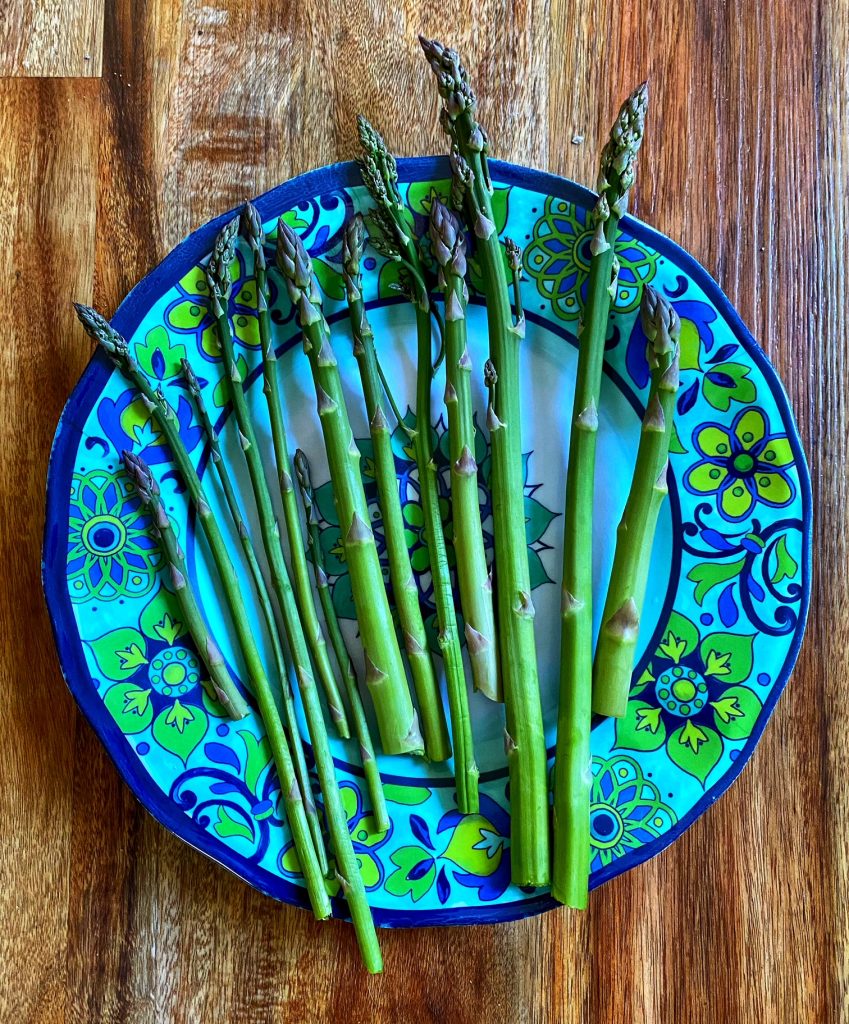
Does anyone else feel like summer is completely flying by?! I’m having trouble wrapping my brain around the idea that it’s going to be August in just a few days. It certainly doesn’t feel like fall is anywhere on the horizon, though. It’s been very hot and humid out, and we haven’t had any real rain in the garden in quite a few days. While I water the veggies and some of the other annuals, it’s hot summer days like these that make me grateful for all of our native plants. They are designed to withstand all the temperatures that Ohio has to offer, as well as a lack of rainfall. Most native plants have extremely deep root systems, so they can weather just about anything Mother Nature throws their way.
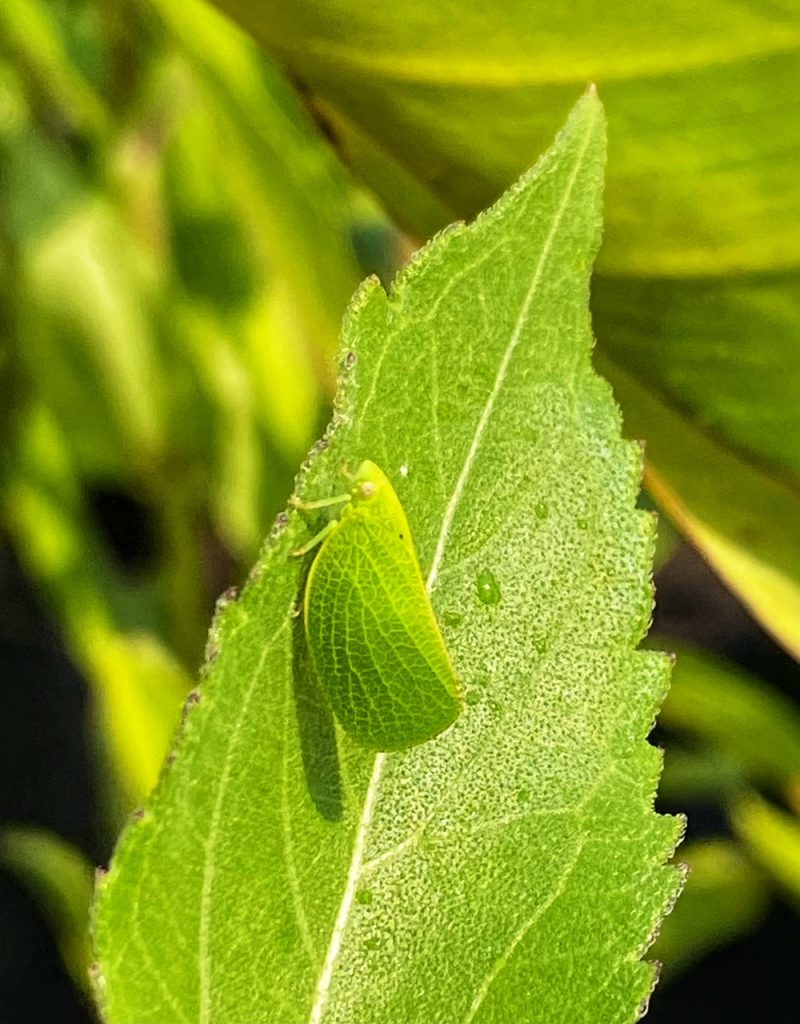
Some of my favorite native plants are in bloom right now: the tall, willowy joe pye weed, the deep purple stalks of prairie blazing star, with flowers like fireworks, fiery pink echinacea (coneflowers), and the sunny, bright yellow rudbeckia (black-eyed susan’s). We have quite a few of each of these plants peppered all over the yard, and I love the bursts of color they provide. These flowers draw in plenty of pollinators, too, and it’s a joy to watch all of the bees and insects humming around the garden all day.
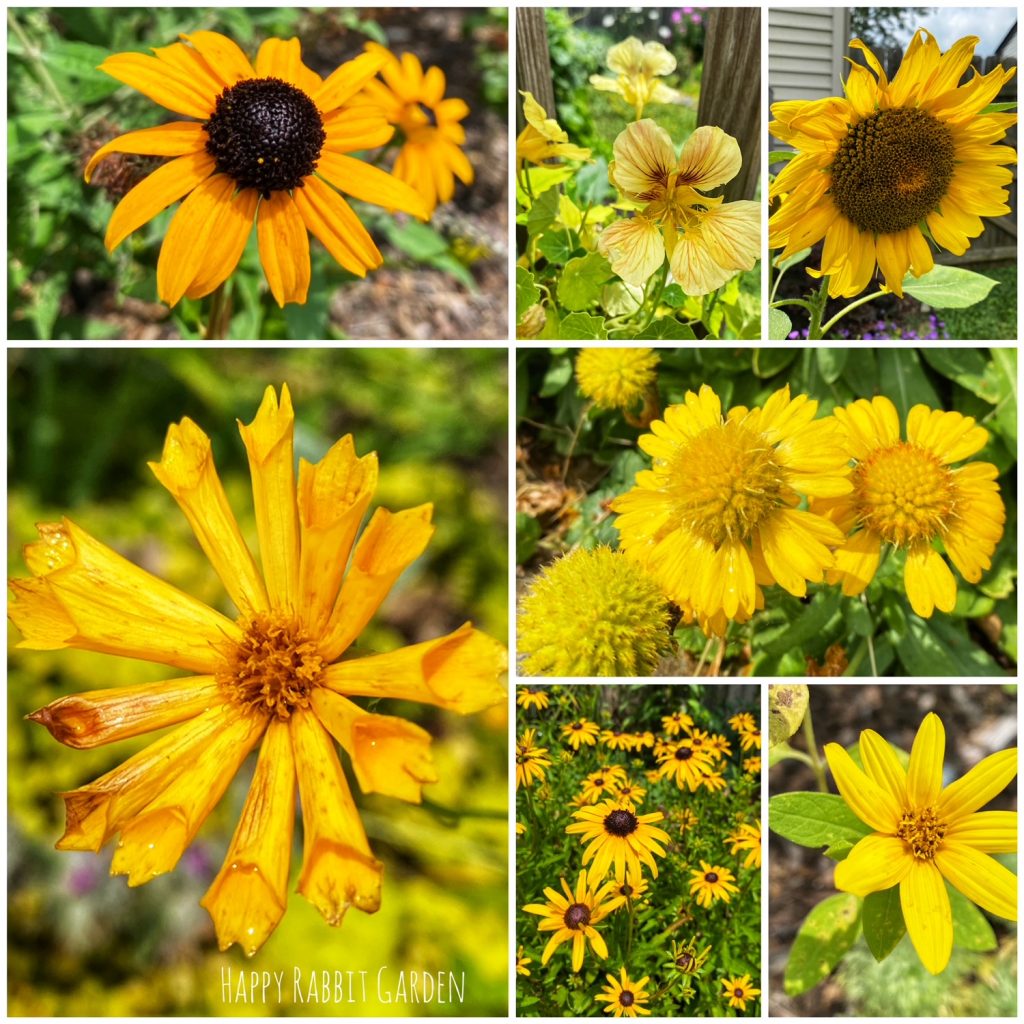
And, luckily for me, all of these gorgeous pollinators are benefitting the rest of the garden in a huge way, by pollinating the rest of our flowers and vegetables. The veggie garden is blowing me away this year. I’ve grown veggies for a few years now, but feel like, finally, I’m starting to understand what I’m doing. Our tomatoes and peppers have never looked happier, and I’ve been harvesting oodles of each a few times a week. The red skin potatoes have also continued producing plenty of goodies.
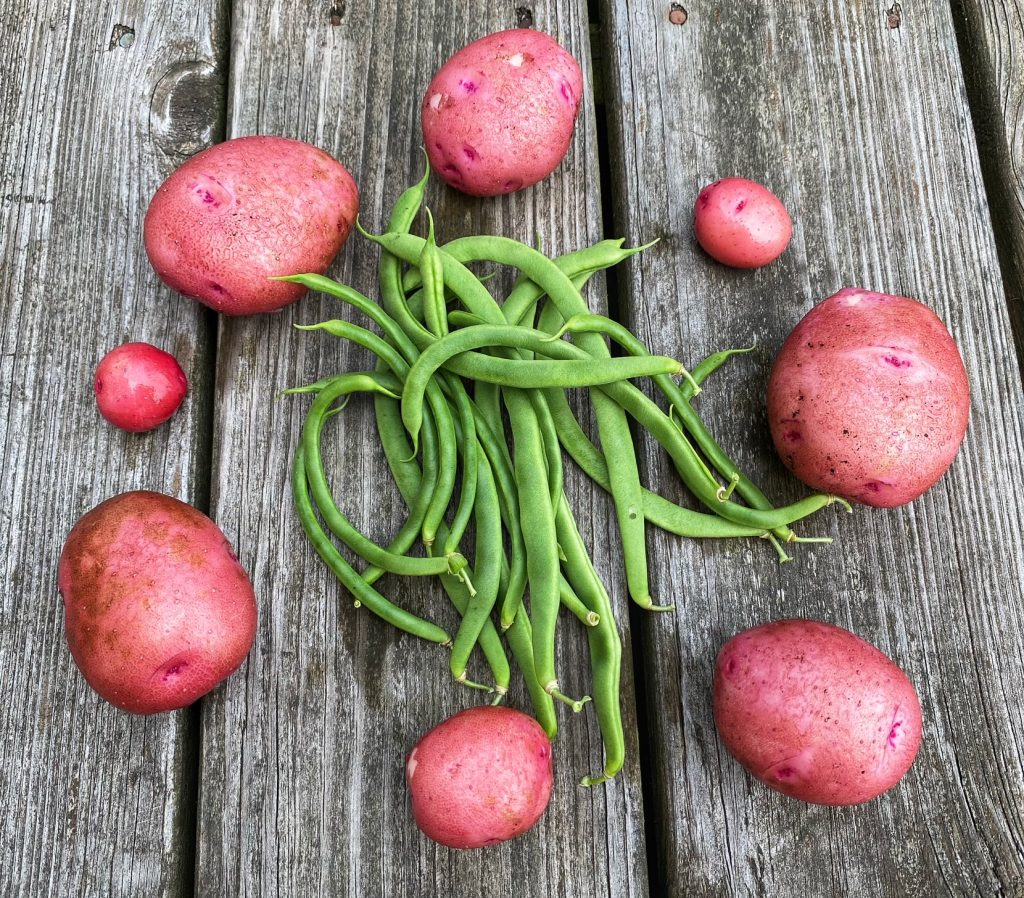
Our two bunches of green beans, the marrowfat bush beans, and green pole beans are also going wild. I check the plants every morning while watering, and have been filling my pockets with piles of each for the past few days. The other night, we grilled up some steaks, and enjoyed the first of the green beans (cooked up with the shallots I harvested a few weeks ago, and some bacon), as well as the first of the potatoes. Being able to pop out into the garden to grab the veggies I’ll be cooking for dinner is such a treat. I love that I’ve watched their entire growth, from seed, to mealtime, and it’s important to me that no pesticides were used on our food.
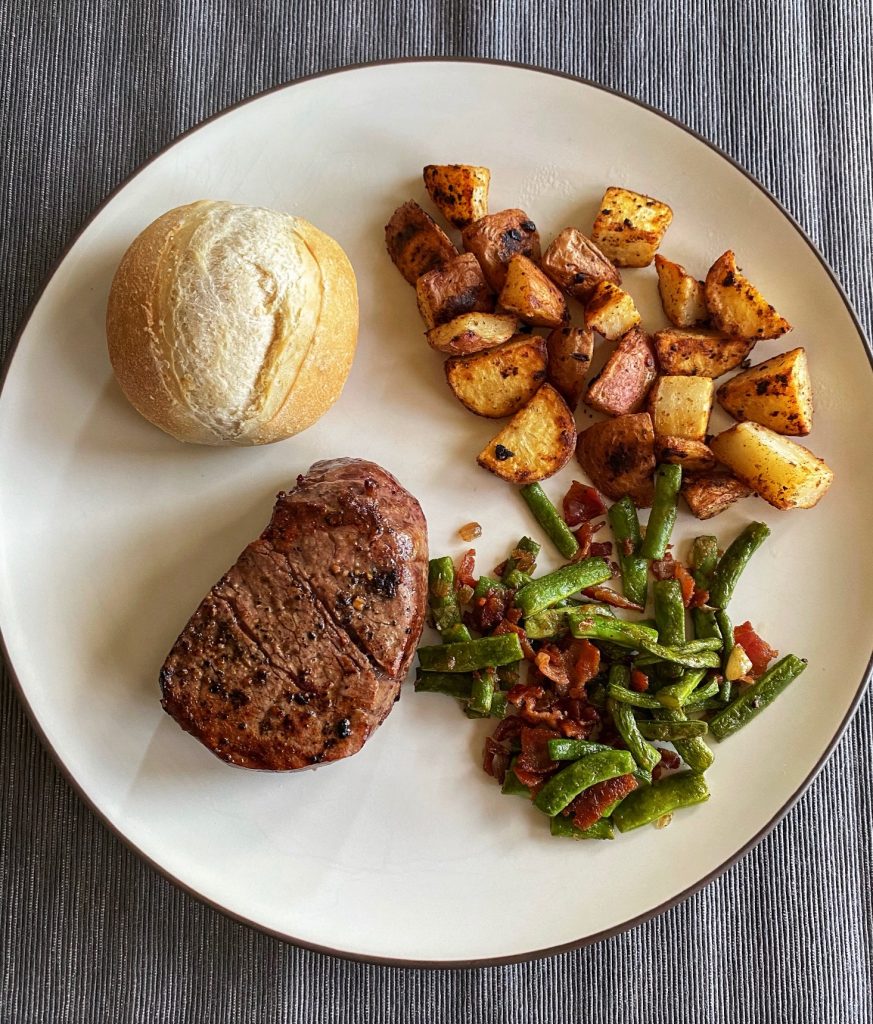
The other day, while stuffing my pockets full of beans, as one does, I discovered something a little… odd. At the bottom of our steps leading off the deck, there were two plants growing that I had not planted. After a little inspection, I discovered that they were tomato plants. I have no clue how these two plants got there- it must have been from seeds that made it into the compost we used in the springtime? That or the birds have grown must more aggressive in their gardening techniques…
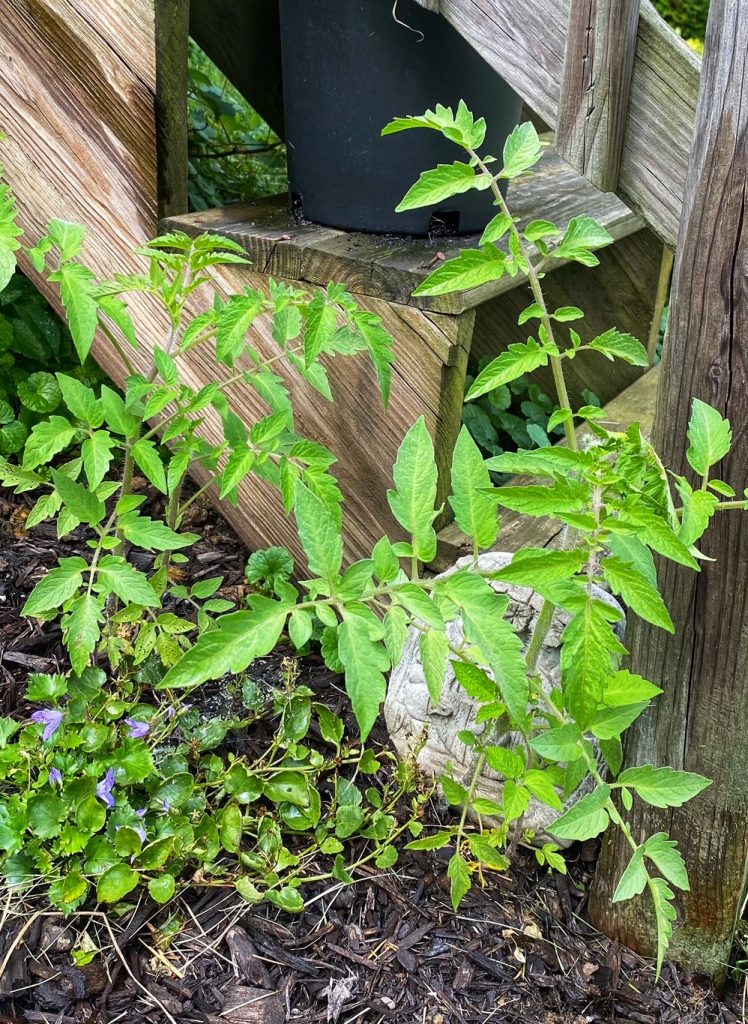
Then, while watering the compost bin, I noticed another tomato plant growing beside it as well. That plant is most assuredly from some seeds that made it into the compost pile. I could pull the plants out, but anything that is fighting that hard to grow where it will deserves to keep at it, in my opinion. I’m curious to see what varieties these tomatoes will be, something that I grew this year, or in year’s past?
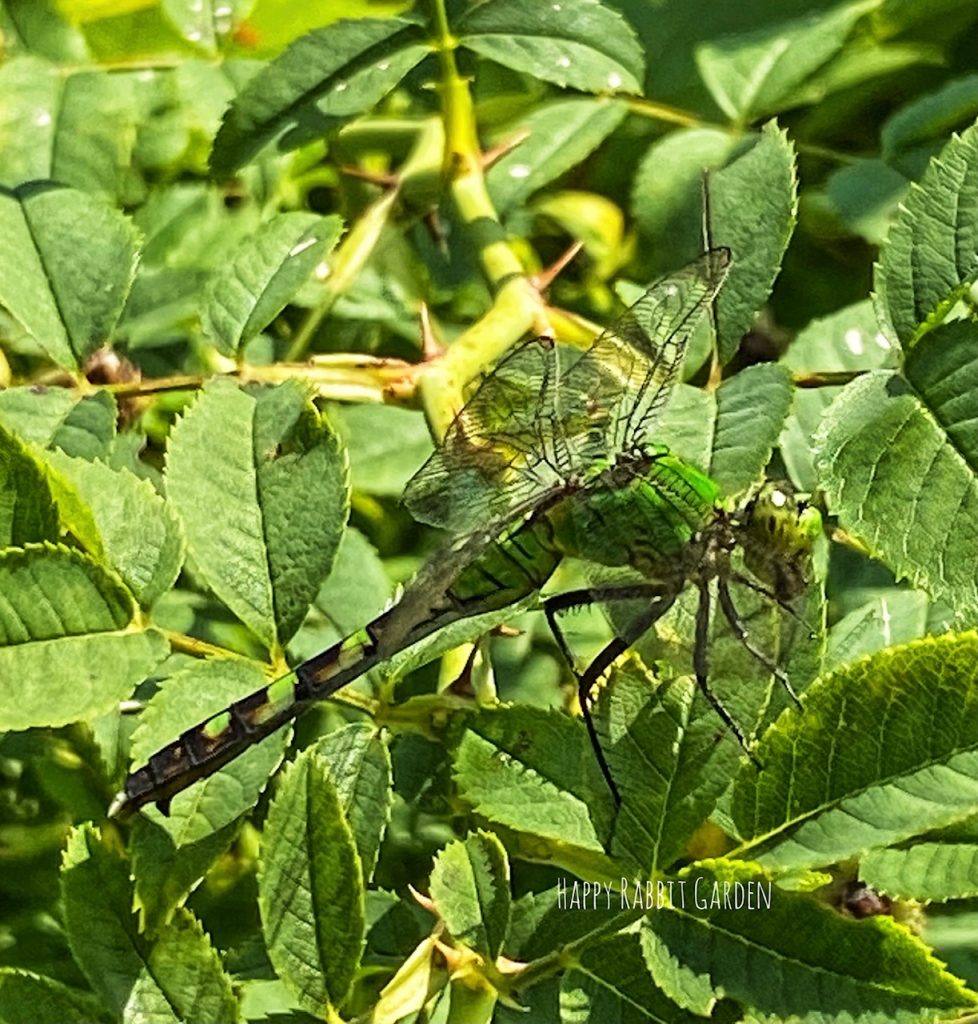
It looks like this week will continue our hot, summer weather. I imagine I’ll be outside harvesting lots more veggies and herbs, stalking the local bug population for pictures, and making sure my collection of odd (for Ohio) plants like our banana and lemon trees have plenty of food and water. I’m hoping the skies open up at some point so the neighbors aren’t subjected to my alarming attempts at rain dancing. I have some weeding to do, but have been trying to put it off for a cooler day… at this point, I may be waiting until winter if I keep stalling for reasonable weather.
Hope it’s nice out where your garden lives, and that you are able to get outside to enjoy it this week! Happy gardening!

